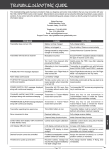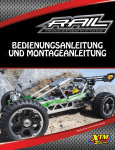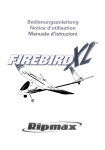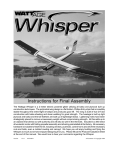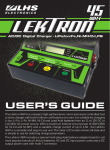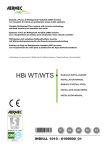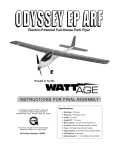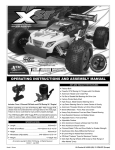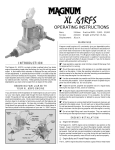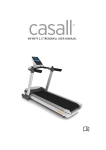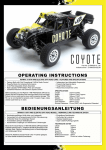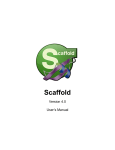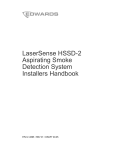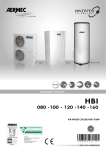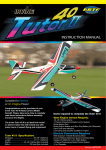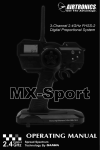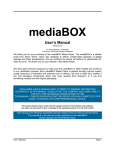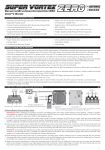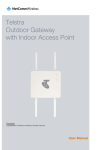Download Kit Product # 145633 (US) / C-XTM
Transcript
Kit P Page 1 33 456 t#1 c rodu .) / (U.S RA TM- C-X e) urop (E ILBL INTRODUCTION Thank you for your purchase of the XTM Racing Rail Brushless Off-Road Buggy! The Rail is built with the characteristics of a full-size sand rail. The Rail isn't restricted to sand use, however. The installed all-terrain tyres allow you to take the Rail on all types of surfaces, from dirt to street, and places in between! Launching the Rail to ballistic speeds are an industrial-grade brushless Electronic Speed Controller with massive cooling fan, and a powerful brushless motor with heat-sink and dual cooling fans. This combination of power and cooling has solved the issue of thermal shutdowns to allow you to enjoy the Rail each and every run, whether using a simple 6 Cell Ni-MH battery pack, or a 4S Li-Po battery pack. Feel confident that all the internal equipment is well protected with the custom aluminium roll cage and side frames which are secured together to provide a rigid and stable chassis. Supporting the Rail are threaded aluminium coil-over oil-filled shocks at each corner which soak up the terrain with ease for a smooth ride. With the adjustable steel gear differentials, adjustable suspension geometry and optional sand paddle tyres, the Rail is sure to deliver performance and stability anywhere you take it! This Operating Manual is designed to help you get your model up and running as quickly as possible. In addition to basic information about your new model, this Operating Manual includes pro tips, a chassis tuning guide, detailed exploded view assembly drawings and a complete replacement parts list with option parts. Be sure to keep this Operating Manual handy for future reference! Before operating your model, please read and understand the warnings listed on the next page. Failure to do so could lead to injury and/or property damage. This model is not intended for persons under 14 years of age, unless closely supervised by an adult. n Rail Brushless Off-Road Buggy Features l Factory-Assembled with Factory-Printed Body Shell l Custom Aluminium Roll Cage Protects Inner Components l Uses 6 ~ 12 Cell Ni-MH Batteries or 2 ~ 4 Cell Li-Po Batteries l Adjustable Toe-in and Camber, Front and Rear l High-Current Brushless Electronic Speed Controller l 4mm Aluminium Shock Towers l High-Powered 1/8th Scale Brushless Motor l Heavy-Duty Drive-Line with Chrome-Plated Front CVDs l Program Card for Customised Electronic Speed Controller Settings l Adjustable Bi-Level High-Downforce Wing l Motor Heat-Sink and ESC Cooling Fans l Aluminium Side Frames Integrate with Chassis and Roll Cage l Full Set of Sealed Ball Bearings for Drive-Line l Adjustable Differentials with the use of After-Market Silicone Oils l High-Torque Metal-Geared Steering Servo l All-Terrain Tyres Mounted on Black Wheels with Metal Rings l Threaded Aluminium Shocks with 3.5mm Shock Shafts l Optional Parts Available for Increased Performance and Handling n Rail Brushless Off-Road Buggy Specifications l Weight (Without Batteries) ............................................................................................................................................ 3.56kg (7.85lbs) l Length ........................................................................................................................................................................... 530mm (20.82") l Width F/R .......................................................................................................................... F: 320mm / R: 315mm (F: 12.59" / R: 12.4") l Height (Measured to Top of Roll Cage with Settled Suspension) ................................................................................... 180mm (7.08") l Wheelbase (Adjustable) ..................................................................................................................345mm ~ 350mm (13.58" ~ 13.77") OPTIONAL SETUP OPTIONS - DIRT TRACK OR SAND Out of the box, the Rail is a good starting platform for racing, and when setup with a smaller pinion gear and sand paddle tyres, is a blast to drive in the sand. In addition to the options suggested in the Chassis Tuning Guide on pages 14 ~ 18, we recommend the following basics as a starting point: Differentials - For general dirt track racing, we recommend using the following weights of differential oils: 3K in the Front, 10K in the Centre, and 2K in the Rear. For use in sand, we recommend using 30K in the Front, 70K in the Centre and 10K in the Rear. Tyres - For dirt track racing, we recommend using the same type of tyre that is popular at your local track. For use in the sand, we recommend using XTM Racing Sand Paddle Tyres (P/N 148716 or P/N 148722). For more information, see the Option Parts List on page 68. Gearing - In the stock configuration, the Rail features a 14T pinion gear, which provides great top speed. If driving on a track or in smaller areas, we recommend using an XTM Racing 13T pinion gear (P/N 150031). This will cut down slightly on the top speed, but acceleration will be better and you will get a little longer run-time. If driving in sand, we recommend using an XTM Racing 12T pinion gear (P/N 148718) to ensure adequate low-end torque. When driving in sand, we strongly recommend using the optional foam filter (P/N 149849) over the motor heat-sink fans to keep sand out of them. For more information, see the Option Parts List on page 67. Page 2 CUSTOmER SERvICE INfORmATION If you should have trouble with any of the steps listed in this Operating Manual, or if you find a missing or a damaged part in your kit or require additional information, please contact your regional distributor at the address below: In North America: In Europe: Global Services 18480 Bandilier Circle Fountain Valley, CA 92708 Ripmax Ltd. 241 Green Street Enfield, EN3 7SJ, U.K. Phone: (714) 963-0329 Fax: (714) 964-6236 Email: [email protected] Phone: (0) 20 8282 7500 Fax: (0) 20 8282 7501 Email: [email protected] XTM Racing guarantees this kit to be free from defects in both material and workmanship, at the date of purchase. This does not cover any component parts damaged by use, misuse or modification. In no case shall XTM Racing's liability exceed the original cost of the purchased kit. In that XTM Racing has no control over the final assembly or material used for final assembly, no liability shall be assumed for any damage resulting from the use by the user of the final user-assembled product. By the act of using the final user-assembled product, the user accepts all resulting liability. For detailed warranty information, refer to the page 71. PrIor to oPErAtINg your NEw modEl, PlEAsE thoroughly rEAd ANd uNdErstANd thE INformAtIoN coNtAINEd IN thE thIs oPErAtINg mANuAl. doINg so wIll ENsurE your succEss ANd ProvIdE thE grEAtEst ENjoymENt of thIs Product. SAfETY WARNINGS AND ImPORTANT INfORmATION n General Warnings l Under no circumstances should you operate your model in crowds of people. Serious injury could result. l Never operate your model on busy streets or if there are cars around. l Do not use your model to chase pets or other animals. l The electronics in your model are not waterproof. Therefore, do not drive through water, wet grass, mud or snow. l l l Because your model is operated by radio control, it is important to make sure you always use fresh and/or fully charged batteries (if using Ni-Cds or Ni-MHs) in the transmitter. Never allow the batteries to run low or you could lose control of the model. If your model becomes stuck, do not continue to apply power or damage can occur. Release the throttle and retrieve your model by hand. To prevent excessive r.p.m.s from damaging your motor and/or drivetrain components, we suggest reducing power while in the air during jumps. n Brushless Power System Warnings and Information l l l l l Your model is fitted with an extremely powerful brushless power system. For your safety, please use caution at all times to keep your hands, loose clothing, etc., away from any moving parts. For your safety and the safety of others, prior to making any programming changes to the Electronic Speed Controller using the included ESC programming card, we strongly suggest removing the pinion gear from the motor. This will prevent any chance of a runaway model. The tyres on your model will 'balloon' to a larger diameter when mounted on a high-speed model, such as the Rail Brushless Off-Road Buggy. DO NOT hold the model in the air and run it up to full throttle or tyre failure could occur. Check the tyres often to ensure that they're securely glued onto the wheels. After soldering connectors onto your batteries, and when plugging your batteries into the ESC, make sure to observe correct polarity. This will ensure that when you plug the batteries into the ESC that you do not plug them in with reverse polarity. Plugging the batteries in with reverse polarity will damage the ESC and possibly damage your batteries. The power output of the brushless power system is dependent on the type and quality of the batteries and battery connectors that you use. While the power system will provide good power using lower-quality batteries, to take full advantage of the power available, we recommend the use of high-quality batteries and connectors. We provide high-quality gold-plated Bullet connectors on your model. We recommend keeping these connectors and using the equivalent on your batteries. Page 3 Continued On Next Page SAfETY WARNINGS AND ImPORTANT INfORmATION n Lithium Polymer (Li-Po) Battery General Warnings Lithium Polymer (Li-Po) batteries are significantly more volatile than Alkaline or Ni-Cd/Ni-MH batteries used in R/C applications. When using Li-Po batteries to power your model, all instructions and warnings must be followed closely. Mishandling of Li-Po batteries can result in fire. In addition to the general Li-Po battery warnings below, be sure to understand and follow the warnings included with the particular Li-Po batteries you use. l l ALWAYS follow the instructions included with your Li-Po batteries and/or Li-Po charger to charge Li-Po batteries. DO NOT attempt to charge Li-Po batteries with any charger other than a charger designed to charge Li-Po batteries. The Li-Po battery charger you use should include a balancing feature. l DO NOT leave Li-Po batteries unattended during the charging process. l ALWAYS charge Li-Po batteries on a fire-resistant surface and NEVER charge Li-Po batteries near any flammable material. l DO NOT use or charge Li-Po batteries if they are hot to the touch. l DO NOT leave Li-Po batteries in direct sunlight or in a hot car or storage area, or allow Li-Po batteries to be exposed to moisture. l DO NOT short-circuit Li-Po batteries. l DO NOT leave Li-Po batteries plugged into your model when not in use. Li-Po batteries should be stored in a fire-proof container. l ALWAYS let Li-Po batteries cool between uses and charging. l INSPECT Li-Po batteries before each use for swelling or other malformation. If damaged, they should not be used. l DO NOT poke, bend or otherwise damage Li-Po batteries. DO NOT short-circuit. l DO NOT allow Li-Po batteries to ever exceed 71ºC (160ºF) for any reason. n Alkaline, Ni-Cd, Ni-MH, and Li-Po Battery Instructions for Disposal These products must not be disposed of with other household waste. Instead, it is the user's responsibility to dispose of these products by handing them over to a designated collection point for the recycling of waste electrical and electronic equipment. The separate collection and recycling of these products at the time of disposal will help to conserve natural resources and ensure that they are recycled in a manner that protects human health and the environment. For more information about where you can take these products for recycling, please contact your local city or municipal office, your household waste disposal service, or where you purchased the product. KIT CONTENTS After opening your Rail Brushless Off-Road Buggy, remove all of the parts from the box and double-check that you have all of the items listed below. If you find a part is missing or damaged, please contact your regional distributor, using the Customer Service Information on page 3. l Rail Chassis with Electronics l Tyres and Wheels (Glued)* l Suspension Plate Holders l Transmitter l Body Clips (5)* l Allen Keys and Wrenches l ESC Programming Card l Decal Set l Instructions for Radio Control System l Lexan Body Shell (Printed)* l Receiver Antenna Support Tube l Instructions for ESC/ESC Programming Card l Nylon Wing with Retaining Clip* l 4mm Female Bullet Connectors (1 Pair) IMPORTANT: If you drive your Rail in sand, we strongly recommend using the optional foam filter over the motor heat-sink fans to keep sand out of the fans. For more information, see the Option Parts List on page 67. The brand and type of radio control system (transmitter, receiver, and steering servo) included with your Rail varies by region. Please make sure to read through the separate radio control system Operating Manual included to learn about your radio control system's features and proper use. Kit contents are subject to change at any time without notice. Page 4 *May come installed on chassis and not loose in the box. ITEmS REqUIRED TO OPERATE AND mAINTAIN The products listed below must be purchased separately and are required to run you Rail Brushless Off-Road Buggy. We've also listed the items we recommend you have on-hand to perform basic maintenance and for using the included ESC programming card. n Battery Requirements The Rail Brushless Off-Road Buggy can be powered using either one battery pack or two battery packs wired in series. You can use either Ni-Cd, Ni-MH, or Li-Po battery packs. The ESC can handle 6 ~ 12 Ni-Cd or Ni-MH cells or 2 ~ 4 Li-Po cells in either a one pack or a two pack configuration. Do not exceed the maximum combined cell count or the ESC will be damaged! In addition, NEVER mix Ni-Cd, Ni-MH, or Li-Po cells! Recommended Single Battery Pack Setup l One 6C Ni-MH Battery Pack (4200mAh or greater) or One 2 ~ 4S (35C) Li-Po Battery Pack of desired capacity Recommended Two Battery Pack Setup l Two 6C Ni-MH Battery Packs (4200mAh or greater) or Two 2S (35C) Li-Po Battery Packs of desired capacity l Two 4mm Gold-Plated FEMALE Bullet Connectors with Heat-Shrink Tubing (If not included with batteries) l Two 4mm Gold-Plated MALE Bullet Connectors with Heat-Shrink Tubing* l 12 AWG Silicone Wire* *To make Dual Battery Jumper. See page 10. Alternately, a preassembled jumper (P/N 145795) can be purchased separately. For more information, see the Option Parts List on page 70. Regardless of the type of battery pack(s) you choose, the following pertains: the more cells you use, the more power the battery pack will provide, but the heavier the battery pack will be. The higher the capacity of the battery pack (e.g., mAh), the longer the run-time you will experience, but the heavier the battery pack will be. Whilst the capacity of the battery pack you choose can be as high as desired (while still allowing the battery pack to fit in the battery holder), the total combined cell count should never exceed the maximum for the ESC. n Miscellaneous Requirements In addition to the battery requirements listed above, the following items are recommended to run and maintain your Rail Brushless Off-Road Buggy. l 'AA' Alkaline Batteries for Transmitter (Quantity will vary depending on set included) l AC or AC/DC Charger for Ni-Cd/Ni-MH and/or Li-Po Batteries l Solder (for Electronics) and Soldering Iron l Heat Gun or Lighter (for Heat-Shrink Tubing) l Metric Ruler l # 1 and # 2 Phillips Head Screwdrivers l 1.5mm, 2mm, 2.5mm, and 3mm Hex Wrenches l 5.5mm and 7mm Nut Drivers l 17mm Wrench or Socket (for Wheel Nuts) l Adjustable Wrench and Needle Nose Pliers l Scissors or Modeling Knife l Motor Spray and Ball Bearing Oil l Assorted Weights of Silicone Oil to Tune Shocks and Differentials (Optional) The charger you use should be compatible with the type of batteries you're using. For example, if you're using Li-Po batteries, your charger must be able to charge Li-Po batteries. n ESC Programming Card Requirements The ESC programming card can be powered by your motor batteries, or by a separate battery. If you decide to power the ESC programming card with a separate battery, you will need the type of battery listed below. For more information, see page 13. l One 4 ~ 5 Cell Ni-Cd or Ni-MH Receiver Battery Pack or One 4 Cell Battery Holder with 4 'AA' Alkaline Batteries Page 5 bECOmING fAmILIAR WITh YOUR RAIL bRUShLESS Off-ROAD bUGGY n Chassis Component Overview Use the photo and descriptions below to familiarise yourself with the Rail Brushless Off-Road Buggy's main chassis components. Brushless ESC with Cooling Fan ESC On/Off Switch Roll Cage Shock Tower Wing Brushless Motor with Heat-Sink and Cooling Fans Steering Servo ESC Battery Leads Centre Differential Battery Retaining Strap Turnbuckle Body Mount Receiver Box with Antenna Mount Bumper Shock Absorber Suspension Arm Battery Holder Steering Tie-Rod Wheel/Tyre Assembly *Roll cage shown in the opened position. Features and specifications subject to change without notice. Battery Holder: Moulded out of impact-resistant nylon plastic, the battery holder firmly holds the battery pack(s) that power the Rail. The battery holder is sized to fit most 6 cell Ni-Cd or Ni-MH battery packs and 2 ~ 4S Li-Po battery packs. Battery Retaining Strap: The battery retaining strap holds the Ni-MH or Li-Po battery pack(s) that powers the Rail securely in the battery holder. The battery retaining strap makes it easy to remove the battery pack(s) and is adjustable to fit different size battery packs. Body Mount: Moulded out of high-impact nylon plastic for strength, the body mount supports the body. Five body mounts are featured to secure the body firmly in place. Brushless ESC with Cooling Fan: The ESC is a solid-state device that takes power from the battery pack and the throttle signal from the receiver and converts them into proportional power for the motor. The Rail features a high-quality 120 Amp brushless ESC that can handle 6 ~ 12 cell Ni-Cds or Ni-MHs, or 2 ~ 4S Li-Pos. In addition, the ESC features a 3 Amp/6 Volt Battery Eliminator Circuit (BEC), forward and reverse control, and a cooling fan that helps keep the ESC from getting too hot. The ESC can also be programmed using the included ESC programming card. Brushless Motor with Heat-Sink and Cooling Fans: The brushless motor provides the power to the drivetrain. Brushless motors are more efficient and produce more power than brushed motors. The Rail features a powerful 2370kV brushless motor that includes a heat-sink and dual cooling fans to help keep motor temperatures under control. Bumper: Moulded out of impact-resistant nylon plastic, the bumper protects the chassis from most head-on impacts. Centre Differential: The centre differential transfers power between the front and rear gearboxes. The centre differential can be tuned for specific conditions using different weights of silicone oil. ESC Battery Leads: The ESC battery leads are where you plug your battery pack in to power your Rail. The ESC battery leads feature high-quality 12 AWG silicone wire and gold-plated 4mm male Bullet connectors. ESC On/Off Switch: Turns the ESC 'ON' and 'OFF'. The ESC On/Off switch features a 'SET' button, which is used in the throttle control range calibration feature. For more information, see page 11. Receiver Box with Antenna Mount: This is where the receiver is mounted. The receiver box protects the receiver from dust, dirt and debris. The top of the receiver box features an antenna mount that the plastic antenna tube fits into. The receiver box is not waterproof. Page 6 Continued On Next Page bECOmING fAmILIAR WITh YOUR RAIL bRUShLESS Off-ROAD bUGGY n Chassis Component Overview, Continued.... Roll Cage: The roll cage is constructed of aluminium and helps protect the components within the chassis. The roll cage also helps stiffen the chassis because it's rigidly attached to the aluminium side frames, the rear shock tower and the front steering plate. Shock Absorber: Each shock is oil-filled and uses a spring that is well suited for most off-road conditions. The shocks are threaded and feature preload tension rings that allow the shocks to be easily tuned for different driving conditions. The shocks come standard with 30Wt oil and 1.6mm silver springs. Shock Tower: Secures the shock absorber while allowing many different geometry settings to suit different track conditions. The shock towers are made from 4mm 6061 aluminium for strength. Steering Servo: Controls the Rail's steering. A 'servo saver' is used to help prevent the servo gears from being stripped out. Steering Tie-Rod: The steering tie-rod connects the steering linkage and the castor block. The tie-rods are adjustable so you can make toe-angle adjustments to the front wheels. Suspension Arm: Helps support the Rail’s handling (when coupled to shock absorbers) and braking whilst ensuring maximum traction (keeps the wheels in contact with the ground) and protects the chassis components from undue stress and strain. Turnbuckle: Joins the upper inner and upper outer suspension components. The turnbuckle is threaded, allowing you to adjust the camber angle of the front and rear tyres. Wheel/Tyre Assembly: The Rail features moulded rubber tyres with a tread pattern that is good for most off-road applications. The wheels are moulded in one piece from lightweight, high-impact plastic and feature a metal outer ring for extra strength. Wing: Provides downforce to ensure maximum traction. Wing angle can be adjusted to suit different track conditions. n Brushless Power System Overview Please make sure to read through the separate Brushless Speed Controller User Manual included to learn more about the ESC's features and proper use. For throttle control range calibration and programming options, see pages 11 and 12. Positive Battery Lead (Red) Cooling Fan Sensor Input Motor Leads (A, B, C) Negative Battery Lead (Black) Status LED SET Button On/Off Switch Heat-Sink Brushless Motor Accessory Fan Connector kV Rating: 2370kV Shaft Diameter: 5mm Shaft for 1/8th Scale Pinions Brushless ESC ESC Throttle Lead Programmable: Yes Output Rating: 120 Amps Nominal Input Voltage Range: 7.2V ~ 14.8V (6 ~ 12C Ni-Cd or Ni-MH / 2 ~ 4S Li-Po) BEC: Switch Mode 3A/6V Motor Shaft Motor Leads (A, B, C) The Set Button is used during throttle control range calibration. For more information, see page 11. In the default configuration the transmitter's throttle channel servo reversing function should be set to REV (Reverse) and the motor leads should be connected as follows: (A) Blue to motor Black, (B) Yellow to motor Red, and (C) Orange to Motor Yellow. The ESC battery leads feature male battery connectors on both the positive and the negative leads. This allows plug-and-play compatibility with most hard-case Li-Po car battery packs and allows easy dual battery pack wiring with the use of one simple jumper. For more information, see page 10. The motor used in the Rail is a sensorless brushless motor. Therefore, the Sensor input on the ESC is not utilised. The motor leads from the ESC can be plugged into any of the motor leads from the motor without issue. If the motor runs backwards, swap two of the motor leads and the motor will run in the correct direction (counter-clockwise). The Accessory Fan Connector is used to connect the brushless motor heat-sink cooling fans. It is NOT recommended to use it to power any other types of accessories. Page 7 TIPS fROm ThE PROS l l l l l l l l l l Separate instructions are included for the radio control system and the brushless Electronic Speed Controller/ESC programming card included with your Rail Brushless Off-Road Buggy. Make sure to read both of them thoroughly, in addition to this Operating Manual, before running your model for the first time. Double-check all of the fasteners to ensure that they're tight. Do not overtighten any screws that thread into nylon or composite material, or the material may strip out. Screws threaded into nylon or composite material need only be tightened snugly. If you have difficulty sliding the receiver antenna wire through the antenna support tube, first pull the antenna wire through your fingers several times to straighten it, then lightly wet the antenna wire with glass cleaner. The glass cleaner will make the antenna wire slide through the support tube much easier. Leave any excess antenna wire hanging from the top of the antenna support tube. Under no circumstances should you cut the antenna wire shorter. In some cases, if the battery retaining straps are left too long, they can interfere with the correct fit of the body shell. If this occurs, cut away the excess material from the battery retaining straps prior to installing the body shell. The ESC battery leads feature male battery connectors on both the positive and the negative leads. This allows plug-and-play compatibility with most hard-case Li-Po car battery packs and allows easy dual battery pack wiring with the use of one simple jumper. If you prefer to change the connectors, make sure to observe correct polarity and use heat-shrink tubing to insulate the solder joints. Before checking the steering and throttle controls, we recommend placing the Rail on a car stand so that the wheels are off the ground. This will ensure your safety and the safety of your model while testing the throttle control. If the motor does not seem to be producing full power, double-check that your batteries are fully charged, then double-check that your transmitter's throttle channel EPA is set to 100%. Before making programming changes to the ESC using the ESC programming card, remove the pinion gear from the motor. This will ensure your safety and prevent any chance of a runaway model. If you drive your Rail in sand, we strongly recommend using the optional foam filter over the motor heat-sink fans to keep sand out of the fans. For more information, see the Option Parts List on page 67. PREPARING TO RUN YOUR RAIL bRUShLESS Off-ROAD bUGGY For clarity, the photographs in this section show the roll cage pulled up pivoted forward. While not necessary to complete these steps, doing this makes it easier to access the chassis components. For more information, see page 20. n Transmitter and Receiver q Double-check that your transmitter is turned 'OFF'. q Install the 'AA' Alkaline batteries into your transmitter, double-checking to make sure that the polarity (+/-) is correct. For more information, refer to the separate radio control system Operating Manual included. q Remove the four 3 x 10mm self-tapping screws that hold the receiver box lid in place, then remove the receiver box lid. q Uncoil the receiver antenna wire and feed it out through the hole in the receiver box lid, then refit the receiver box lid, making sure not to pinch any of the wires. IMPORTANT: Before reinstalling the receiver box lid, verify that the steering channel and ESC throttle channel leads are plugged into channel 1 and channel 2, respectively. PRO TIP: If you have difficulty sliding the antenna wire through the antenna support tube in the next procedure, first pull the antenna wire through your fingers several times to straighten it, then lightly wet the antenna wire with glass cleaner. q Slide the receiver antenna wire into the antenna support tube. q Loosen the knurled nut in the antenna mount, push the end of the antenna support tube firmly down into the antenna mount, then tighten the knurled nut gently to lock the antenna tube in place. IMPORTANT: Leave any excess antenna wire hanging from the top of the antenna support tube. Under no circumstances should you cut the antenna wire shorter. Page 8 Continued On Next Page PREPARING TO RUN YOUR RAIL bRUShLESS Off-ROAD bUGGY n Battery Pack Installation and Power Connections q Verify that the ESC On/Off switch is turned 'OFF'. To ensure your safety, it's important that the ESC be turned 'OFF' when connecting your battery pack(s). The ESC can handle 6 ~ 12 Ni-Cd or Ni-MH cells or 2 ~ 4 Li-Po cells in either a one pack or a two pack configuration. Do not exceed the maximum combined cell count or the ESC will be damaged! In addition, NEVER mix Ni-Cd, Ni-MH, or Li-Po cells! Single Battery Pack Installation and Power Connections If you're using two battery packs, please skip to the Dual Battery Pack Installation and Power Connections section on the next page. q Solder two 4mm female Bullet connectors (included) onto your battery pack to match the two 4mm male Bullet connectors installed on the ESC battery leads. If you're using a hard-case Li-Po car battery pack with preinstalled 4mm female Bullet connectors, you can skip the procedure above. q If you're using a 3 or 4 cell battery pack, and it's too long to fit in the battery holder, unsnap the spacer block from the back of the battery holder and remove it. Otherwise, leave this spacer block in place. The majority of 6 cell Ni-MH battery packs and 2S Li-Po battery packs will fit without the need to remove the spacer block. q Slide your battery pack into the battery holder, then pull the two battery retaining straps tight to hold your battery pack securely in place. Install your battery pack with the battery leads toward the BACK of the battery holder. IMPORTANT: In some cases, if the battery retaining straps are left too long, they can interfere with the correct fit of the body shell. If this occurs, cut away the excess material from the battery retaining straps prior to installing the body shell. q With the ESC On/Off switch in the 'OFF' position, plug the battery leads into the ESC battery leads, making sure that the polarity is correct. Positive (red) to positive (red) and negative (black) to negative (black). Page 9 Continued On Next Page PREPARING TO RUN YOUR RAIL bRUShLESS Off-ROAD bUGGY Dual Battery Pack Installation and Power Connections q Solder two 4mm female Bullet connectors onto each battery pack (for reference, see the photo on the previous page). Connectors for one battery pack are included. You will need a second pair of connectors (available separately) for your second battery pack. If you're using hard-case Li-Po car battery packs with preinstalled 4mm female Bullet connectors, you can skip the procedure above. q Make a jumper using a short length of 12 AWG silicone wire [approximately 100mm ~ 127mm (4" ~ 5") depending on the battery packs used] with one 4mm male Bullet connector soldered onto each end. This jumper will allow you to connect your two battery packs in series. Alternately, you can purchase a preassembled jumper (P/N 145795). For more information, see the Option Parts List on page 70. q A spacer block is installed in the battery holder to stagger the two battery packs so that they can be stacked on top of each other without interfering with the battery leads. If using two hard-case Li-Po car battery packs with the battery connectors in the top of the battery, unsnap the spacer block from the back of the battery holder and reinstall it at the front of the battery holder. This will allow the batteries to be installed staggered with the battery connectors toward the back of the battery holder. q Slide one battery pack into the battery holder, then slide the second battery pack into the battery holder on top of the first battery pack. Install your battery packs with the battery leads toward the BACK of the battery holder. In addition, the battery packs should be staggered so that the connectors can be plugged into each battery pack without interference. q Pull the two battery retaining straps tight to hold your battery packs securely in place. q With the ESC On/Off switch in the 'OFF' position, make your battery connections. The battery packs should be connected in series. To do this, plug one end of the jumper you made into the positive (red) connector on one battery pack, then plug the other end of the jumper into the negative (black) connector of the second battery pack. Next, plug the free connector from each battery pack into the ESC battery connectors, making sure that the polarity is correct. Positive (red) to positive (red) and negative (black) to negative (black). For more information, see page 49. n Checking the Steering and Throttle Controls IMPORTANT: Before checking the steering and throttle controls, we recommend placing the Rail on a car stand so that the wheels are off the ground. This will ensure your safety and the safety of your model while testing the throttle control. If your model features a 2.4GHz radio control system, your transmitter and receiver have already been paired and should work correctly. If not, bind your transmitter and receiver again following the procedures in the radio control system Operating Manual. q Turn your transmitter 'ON' and verify that it has sufficient power. q Turn the ESC switch 'ON'. The ESC and motor heat-sink cooling fans will power up, the Status LED will flash red twice and turn solid orange, then the ESC will beep 3 times. This indicates that the ESC is operating correctly and the motor is armed. The Status LED is visible through the side frame, near the bottom of the ESC. Page 10 Continued On Next Page PREPARING TO RUN YOUR RAIL bRUShLESS Off-ROAD bUGGY n Checking the Steering and Throttle Controls, Continued.... q Rotate the transmitter's wheel forward (to the right). The Rail's front wheels should turn right. IMPORTANT: If the wheels don't turn right, use the transmitter's steering channel servo reversing function to change the direction that the front wheels turn. For more information, refer to the separate radio control system Operating Manual included. q Rotate the transmitter's wheel backward (to the left). The Rail's front wheels should turn left. q Let go of the transmitter wheel. The Rail's wheels should return to centre. IMPORTANT: If the wheels do not point straight ahead (centre) after you return the transmitter wheel to centre, use the transmitter's trim function to adjust the wheels so that they point straight ahead. For more information, refer to the separate radio control system Operating Manual included. q Pull the throttle trigger back. Both the front and rear wheels should spin forward. q Release the throttle trigger and the wheels should stop spinning. IMPORTANT: If the wheels don't spin forward, use the transmitter's throttle channel servo reversing function to change the direction that the wheels turn. For more information, refer to the separate radio control system Operating Manual included. q Push the throttle trigger forward. Both the front and rear wheels should spin backward. q Release the throttle trigger and the wheels should stop spinning. As a safety precaution to prevent damage to the drivetrain, the Rail must be stopped before going into reverse. When the Rail is moving forward and you push the throttle trigger to go into reverse, the Rail will begin to brake and come to a stop. To go into reverse, release the throttle trigger momentarily, then push the throttle trigger forward again. n Throttle Control Range Calibration Before running your Rail for the first time, we recommend that you calibrate the throttle to ensure that you're achieving maximum throttle range. To calibrate the throttle control range, follow these procedures: q Double-check that the ESC is turned 'OFF', then connect your charged battery pack(s) to the ESC battery leads. q Turn your transmitter 'ON', check the throttle channel servo reversing function is set to REV (Reverse), then adjust both throttle channel End Points to 100%. For more information, refer to the separate radio control system Operating Manual. q While holding down the 'SET' button on the ESC, turn the ESC 'ON'. Wait approximately 4 seconds until the orange LED turns solid, then release the 'SET' button. The Status LED is visible through the side frame, near the bottom of the ESC. q Pull the throttle trigger to full throttle. The red LED will flash, then the red LED will turn solid and the ESC will beep once. q Push the throttle trigger to full reverse. The orange LED will flash, then the orange LED will turn solid and the ESC will beep twice. Page 11 Continued On Next Page PREPARING TO RUN YOUR RAIL bRUShLESS Off-ROAD bUGGY n Throttle Control Range Calibration, Continued.... q Release the throttle trigger to the neutral position. Both the red and orange LEDs will flash simultaneously, then turn solid and the ESC will beep three times. q Turn the ESC 'OFF', then turn the ESC back 'ON'. The throttle range has now been calibrated and the ESC is ready to use. n Using the ESC Programming Card The Rail includes an ESC programming card that is used to make programming changes to the ESC. A number of different options can be customised to suit the user's desired setup. The ESC programming card can be powered by separate battery pack, or by the Rail's motor batteries for use at the track. In addition, all of the programming information is printed on the ESC programming card for the utmost in convenience. The following ESC options can be customised: l Low Voltage Cutoff l Throttle Limit l Running Mode l Braking Percentage l Motor Timing l Drag Brake Percentage l Initial Acceleration l Operating Hertz l Reverse Throttle Limit l Neutral Range This section describes basic ESC programming procedures. For more detailed information, including information about each of the customisable options, please refer to the separate ESC User Manual included. Powering the ESC Programming Card from the Motor Battery If desired, the ESC programming card can be powered directly from the motor battery. For your safety and the safety of others, prior to making any programming changes to the Electronic Speed Controller using the ESC programming card, we strongly suggest removing the pinion gear from the motor. This will prevent any chance of a runaway model. q Rotate the spur gear so that the grub screw in the pinion gear lines up with the milled notch in the top of the motor mount. q Using a 2mm hex wrench, loosen the grub screw, then pull the pinion gear off the motor shaft. When you reinstall the pinion gear after programming, make sure to firmly tighten the grub screw against the flat spot on the motor shaft. q Remove the receiver box lid and unplug the ESC throttle lead from the receiver, then plug the ESC throttle lead into the 'prog-card' connector on the ESC programming card, observing correct polarity [the white signal wire should be toward the outside of the ESC programming card as indicated (see photo below)]. q Plug the battery leads into the ESC battery leads, then turn the ESC 'ON'. The red LED on the ESC programming card will illuminate and digits will be displayed in the 'MENU' and 'VALUE' screens. To make changes to the different programming options, follow the procedures below: q Press the 'MENU' button to cycle through the various menus 1 ~ 10. The current menu will be displayed in the 'MENU' screen. q From with the desired menu, press the 'VALUE' button to cycle through the various menu values. The current value will be displayed in the 'VALUE' screen. q After changing the selected value, press the 'OK' button. The red LED on both the ESC programming card and the ESC will flash. q Repeat the previous procedures to change the value in the other desired menus. If you prefer to reset the menu options to the default values, press the 'RESET' button. Page 12 Continued On Next Page PREPARING TO RUN YOUR RAIL bRUShLESS Off-ROAD bUGGY Powering the ESC Programming Card from the Motor Battery, Continued.... q Turn the ESC 'OFF'. The new settings will be saved in the ESC's memory. q Apply threadlock to the grub screw, then reinstall the pinion gear, making sure to tighten the grub screw against the flat spot on the motor shaft. Powering the ESC Programming Card from a Separate Battery If desired, the ESC programming card can be powered from a separate battery. This is convenient if you don't want to use your motor battery to power the ESC programming card. Since using a separate battery bypasses your motor batteries completely, there is no chance of the motor accidentally powering up, so you don't need to remove the pinion gear for safety in this instance. The battery you use should be a 4 ~ 5 cell (4.8v ~ 6.0v) receiver battery. In addition, for the ESC programming card to work properly, you MUST plug the ESC throttle lead into the ESC programming card first, then plug the battery lead into the ESC programming card, otherwise, no digits will display in the 'MENU' or 'VALUE' screens. q Remove the receiver box lid and unplug the ESC throttle lead from the receiver. q Plug the ESC throttle lead into the 'prog-card' connector on the ESC programming card, observing correct polarity (the white signal wire should be toward the outside of the ESC programming card as indicated). q Plug your separate receiver battery into the 'Car' connector on the ESC programming card, observing correct polarity (the negative wire should be toward the outside of the ESC programming card as indicated). The red LED on the ESC programming card will illuminate and digits will be displayed in the 'MENU' and 'VALUE' screens. When powering the ESC programming card with a separate battery, it is not necessary to turn the ESC 'ON'. In addition, for safety, you should disconnect the Rail's battery/batteries from the ESC. To make changes to the different programming options, follow the procedures below: q Press the 'MENU' button to cycle through the various menus 1 ~ 10. The current menu will be displayed in the 'MENU' screen. q From with the desired menu, press the 'VALUE' button to cycle through the various menu values. The current value will be displayed in the 'VALUE' screen. q After changing the selected value, press the 'OK' button. The red LED on both the ESC programming card and the ESC will flash. q Repeat the previous procedures to change the value in the other desired menus. If you prefer to reset the menu options to the default values, press the 'RESET' button. q Turn the ESC 'OFF'. The new settings will be saved in the ESC's memory. n Installing the Body and the Wing For your convenience, some of the decals have already been applied to the body shell. To apply the remaining decals to the body shell, simply remove them from the protective backing and apply them to the body shell as desired. q Fit the wing onto the wing mount, using the long body clip pushed through both wing mounting posts, to hold it securely in place. q Install the body shell onto the chassis, using the five body clips provided. In some cases, if the battery retaining straps are left too long, they can interfere with the correct fit of the body shell. If this occurs, cut away the excess material from the battery retaining straps prior to fitting the body shell. Page 13 ChASSIS TUNING GUIDE Chassis alignment and geometry are important if you want your Rail Brushless Off-Road Buggy to perform well. A good performing buggy means a buggy that is easier to drive, too! Follow our guidelines in this section to get the most out of your Rail. It's very important when making changes to the settings of your Rail that you make the settings the same for each side. For example, if you change the spring tension on the front right shock, you should change the spring tension on the front left shock the same amount, etc. Do not make any changes that are more than 3 degrees from the initial settings or the handling characteristics of your Rail will become very poor. n Adjusting Toe Angle - Front and Rear The toe angle is the angle of both front tyres (or rear tyres) to each other, when viewed from above. 'Toe-in' is when the front of both tyres point toward each other and 'toe-out' is when the front of both tyres point away from each other. l l For the front tyres, toe-in will make the Rail track (run) straighter, but the steering will be more sensitive. Toe-out will desensitise the steering, making the Rail a little more driver-friendly. For the rear tyres, if you're running on a smooth surface, we suggest no toe-in. If you're running on a rough surface, we suggest about 1 ~ 2 degrees of toe-in. This will give the rear end a little more 'bite' (traction). recommended Initial settings l 0 degrees toe-in on the front and 2 degrees toe-in on the rear for overall best 4WD driveability on most surfaces. 2 degrees toe-in on the rear is stock. Adding more than 3 degrees of toe-in or toe-out on the front will result in excessive loss of speed and erratic handling. Toe adjustments should be measured with the Rail at its normal ride height. Straight - No Toe Toe-In Toe-Out q To adjust the toe-angle of the front tyres, turn the tie-rods in or out using an adjustable wrench. PRO TIP: For more precise toe angle adjustments, use a dedicated toe angle adjustment gauge, available at most hobby retailers. q To adjust the toe-in on the rear tyres, use one of the different suspension holders provided to set the desired toe angle, as described in the procedures below. For convenience, the degree of toe angle is moulded into the back of each suspension holder. q Remove the two 4 x 12mm self-tapping screws that hold the suspension holder in place, then carefully pull out the suspension holder, being careful not to pull out the hinge pins. q Install the desired suspension holder. Installation is the reverse of the disassembly procedure. n Adjusting Gearing The Rail features a 14T pinion gear that provides the highest top speed. If driving on a track or in smaller areas, we recommend using an XTM Racing 13T pinion gear. This will cut down slightly on the top speed, but acceleration will be better and you will get a little longer run-time. It's all a matter of experimenting with different pinion gears to find the one that best suits your track and driving style. If driving in sand, we recommend using an XTM Racing 12T pinion gear to ensure adequate low-end torque. 12T and 13T pinion gears are available as optional parts. For more information, see the Option Parts List on page 67. In addition, most aftermarket 1/8th scale pinion gears designed for brushless motors with a 5mm shaft should work. After installing a different pinion gear, you may need to readjust the gear mesh. For more information, see page 19. Page 14 ChASSIS TUNING GUIDE n Adjusting Camber Angle - Front and Rear Camber is referred to as the amount of the tyre's surface that contacts the ground. Tyres that are exactly perpendicular to the ground have 0 degrees of camber. If the top of the tyre leans in toward the chassis, the tyre has negative camber. If the top of the tyre leans out away from the chassis, the tyre has positive camber. l Camber angle should be adjusted to ensure maximum tyre contact between the ground and the tyres for your particular track. You can check to ensure maximum tyre contact by first cleaning your tires, then by running the Rail on your track. After running, check the dirt and/or wear marks on the tyre. Adjust the camber angle if the dirt and/or wear marks are more toward the outside or the inside of the tyre. recommended Initial settings l For driving on smooth surfaces set both the front and back tyres at 0 degrees. l For driving on rough surfaces set the front tyres at -1 degree and the back tyres at -2 degrees. Camber settings should be measured with the Rail at its normal ride height. PRO TIP: For more precise camber adjustments, use a dedicated camber gauge, available at most hobby retailers. Positive Camber q To increase positive camber angle, use an adjustable wrench to turn the upper turnbuckles and lengthen the upper suspension arm assembly and push the top of the tyres out. Negative Camber q To increase negative camber angle, use an adjustable wrench to turn the upper turnbuckles and shorten the upper suspension arm assembly and pull the top of the tyres in. n Adjusting Shock Spring Tension - Front and Rear By adjusting the spring tension of the shocks, you can increase steering sensitivity, adjust the ride-height of the Rail, and fine-tune the damping quality of the suspension system. How you drive your Rail will dictate what settings you should be using. As an example, if you're driving your Rail off-road and going over lots of jumps, you may want to increase the spring tension of the front shocks to help prevent the front of the Rail from bottoming out. If you're racing your Rail, local track conditions will dictate the settings to use. recommended Initial settings l We recommend initially leaving each of the adjustment rings in the factory positions. q Increase or decrease spring tension by threading the adjustment ring up or down the shock body. Threading the adjustment ring down (clockwise) increases spring tension and the chassis's ride height, and will stiffen the overall damping characteristics of the suspension. Threading the adjustment ring up (anti-clockwise) decreases spring tension and makes the damping characteristics of the suspension softer. When adjusting the spring tension, make sure to adjust the right and left shocks equally. Page 15 ChASSIS TUNING GUIDE n Changing Shock Springs - Front and Rear Shock springs are easy to change and can make a difference in the way your Rail handles relative to the type of terrain you're driving on. If you drive your Rail off-road, in a smooth, high-traction area, use stiffer springs to reduce body roll and weight shift. If the area where you drive your Rail is very bumpy, you might consider using softer springs to help absorb the bumps. If the area is bumpy and you use harder springs, the Rail will have a tendency to jump and hop around. The shock springs included with the Rail are suitable for most general off-road applications. front SOFT STIFF rear P/N 149356 58mm and P/N 149372 80.5mm 1.3mm Shock Spring (RED) P/N 149354 58mm and P/N 149370 80.5mm 1.4mm Shock Spring (BLUE) P/N 149352 58mm and P/N 149366 80.5mm 1.5mm Shock Spring (WHITE) P/N 148672 58mm and P/N 148673 80.5mm 1.6mm Shock Spring (SILVER) - STOCK P/N 149349 58mm and P/N 149364 80.5mm 1.7mm Shock Spring (BLACK) n Adjusting Shock Damping - Front and Rear Changing the shock oil will change the damping characteristics of the shocks. Typically, if you are running on smooth surfaces, use a heavier weight shock oil. If you are running on rough surfaces, use a lighter weight shock oil. recommended Initial settings l We recommend using the shock oil that the shocks are already filled with. For racing, you may want to consider using 40 weight shock oil. Use only 100% silicone oil in the shocks. Do not use motor oil. q Remove the 3mm lock nut that holds the top of the shock in place, the pull the top of the shock (and the bushing) off the shock mount. q Carefully unscrew the shock cap. Pull the shock piston down completely, then empty the shock oil from the shock. Fill the shock body with shock oil until the oil level is just below the top of the shock body, then pump the shock piston up and down several times to dissipate any air bubbles from the shock oil. Top off the shock oil level if necessary, before reinstalling the shock cap. For more information, see page 41. q Reinstall the bushing and shock. Firmly tighten the 3mm lock nut, then loosen it 1/2 a turn to ensure the shock doesn't bind. Make sure to adjust the right and left sides equally. n Adjusting Shock Mounting Positions - Front and Rear The Rail shock towers feature a number of different mounting positions for the shocks. By changing the location of the upper shock mounts you can make the shock feel stiffer or softer as the Rail rolls from side-to-side. In general, moving the shocks toward the outside will make the shock stiffer and moving the shock toward the inside will make the shock softer. You will need to experiment with these settings to find something that suits both your track and driving style. A good starting point is to adjust the rear shocks. Moving the rear shocks toward the outside will give more 'bite' (traction) in the turns. However, depending on how you drive, you might want to move the shocks toward the middle. This will give a more 'plush' suspension. recommended Initial settings l We recommend initially leaving the shock mounting positions in the factory locations. q Remove the 3mm lock nut that holds the top of the shock in place, the pull the top of the shock (and the bushing) off the shock mount. q Unscrew the shock mount, then reinstall it into the new desired position, making sure to tighten the cap screw firmly. q Reinstall the bushing and shock. Firmly tighten the 3mm lock nut, then loosen it 1/2 a turn to ensure the shock doesn't bind. Make sure to adjust the right and left sides equally. Page 16 ChASSIS TUNING GUIDE n Adjusting Bump Steer - Front The front upper hinge pins can be moved up or down to adjust bump steer. Generally, if you move the hinge pins into a lower position, this will increase bump steer, which can be helpful on tight tracks. For a larger track, you may want to move the hinge pins to a higher position to decrease bump steer. recommended Initial settings l We recommend initially leaving the front upper hinge pins in the factory locations. q Adjust bump steer by removing the upper hinge pins and reinstalling them, along with the upper suspension arms, in a hole either further up or lower down in the upper suspension plate. When tightening the hex nuts on the back of the hinge pins, be careful not to overtighten them or the suspension arms may not pivot freely. Make sure to adjust the right and left sides equally. n Adjusting Droop - Front and Rear Droop is the distance each wheel drops from normal ride height when the chassis is lifted off the ground. Droop is adjusted on each wheel by turning the grub screw in each lower suspension arm up or down. Generally, more droop equals more roll equals more traction. Less droop equals less roll equals less traction. Droop also changes weight transfer. Experimentation will be necessary to achieve the desired response, dependant on your track conditions and driving style. recommended Initial settings l We recommend initially leaving the droop screws in the factory settings. q To decrease droop, tighten the droop screw in each lower suspension arm. To increase droop, loosen the droop screw in each lower suspension arm. n Adjusting Steering Sensitivity - Front You can adjust your Rail's steering sensitivity by tightening or loosening the servo saver spring. In general, tightening the servo saver spring will cause the steering to be more responsive, and loosening the servo saver spring will cause the steering to be less responsive. recommended Initial settings l We recommend initially leaving the servo saver adjustment ring in the factory position. q To access the servo saver spring, remove the steering servo linkage from the servo arm, then remove the steering servo by removing the four 3 x 10mm self-tapping screws from the bottom of the chassis that hold the two servo mounts in place. q Adjust the servo saver spring by adjusting the servo saver adjustment ring up or down. Threading the adjustment ring up (anti-clockwise) will tighten the servo saver spring and threading the adjustment ring down (clockwise) will loosen the servo saver spring. Tightening the servo saver spring increases the chance of damaging the steering servo during a crash. Adjust only as necessary. Page 17 ChASSIS TUNING GUIDE n Adjusting the Differentials - Front, Centre, and Rear The Rail features front, centre and rear bevel gear differentials that feature O-Ring seals and cup-style housings. All three differentials are packed with differential grease that works well for most driving conditions. You can make fine-tuned adjustments to each differential by removing them from the chassis, opening them up and replacing the grease with different weights of silicone oil. l l Front and Rear Differentials: Adding heavier silicone oil will tighten the differentials and adding lighter silicone oil will loosen the differentials. If your Rail feels loose (uncontrollable) during turns, you can tighten the front differential or loosen the rear differential. If your Rail is pushing (understeer) during turns, you can loosen the front differential or tighten the rear differential. Centre Differential: Using a lighter weight oil will cause the differential to unload easier. Generally, this is good for loose tracks with little traction. Using a heavier weight oil will provide a more even amount of power to the front and rear. On loose tracks, this can cause the Rail to be too 'squirrely' (uncontrollable) or cause the rear end to slide out. For this reason, we only suggest using heavier oil if you're driving on a high-traction surface. recommended Initial settings l Unless you're racing, we recommend initially using the grease that already fills each differential. For general dirt track racing, we recommend using the following weights of differential oils: 3K in the Front, 10K in the Centre, and 2K in the Rear. For use in the sand, we recommend using 30K in the Front, 70K in the Centre and 10K in the Rear. We detail below the removal of the front differential. Removing the centre and rear differentials is similar. If necessary, refer to the Exploded View Assembly Drawings beginning on page 28 for more detailed information. q Remove the two 4 x 12mm self-tapping screws and the two 4 x 16mm self-tapping screws from the bottom of the chassis that hold the front bumper and front half of the gearbox in place, then remove the front bumper. When reinstalling the front bumper after filling the differential, make sure to install the two longer 4 x 16mm self-tapping screws in the front half of the gearbox and the two shorter 4 x 12mm self-tapping screws in the front bumper. q Remove the upper hinge pins, then remove the screws that hold the upper suspension plate in place. q Remove the upper and lower suspension plates, then firmly pull the front half of the differential case straight out. q Remove the hinge pins, drop the lower suspension arms, then firmly pull the differential assembly straight out. q Remove the four 2 x 10mm self-tapping screws that hold the differential housing together. Pull the differential housing apart, then pull the differential assembly out of the differential housing. q You can now disassemble the differential, remove the grease, then reassemble and refill the differential with the silicone oil of your choice. For detailed information about disassembling, then re-assembling the differentials, see the 'STEP 1: FRONT, REAR, AND CENTRE DIFFERENTIALS' section on page 28. Page 18 mAINTENANCE AND qUICK bREAK DOWN GUIDE n Adjusting Gear Mesh When you change pinion gears, you must readjust the gear mesh to ensure proper operation. If the gear mesh is too loose, the gears may strip out. If the gear mesh is set too tight, the gears will bind, causing damage to the gears and/or the motor. The gear mesh should be set so that there is very slight play between the pinion gear and the spur gear. If you're using either of the XTM Racing 12T, 13T, or 14T pinion gears, the gear mesh is set correctly based on the particular motor mounting holes you install the motor into. If using other brand pinion gears, you may have to experiment with the mounting hole positions. q Unplug the motors wires from the ESC, then unplug the two motor heat-sink fans from the Y-Harness adapter. q Unplug the throttle channel lead from the receiver, then pull it out from below the motor heat-sink fans. q Remove the two 4 x 12mm self-tapping screws and the two 4 x 10mm machine screws from the bottom of the chassis that hold the centre differential and motor mount in place, then pull the motor assembly out. q Remove the two 3 x 8mm machine screws that hold the main gear plate to the top of the motor mount, then pull the motor and motor mount off the centre differential. 13T 12T 14T q Remove the four 3 x 12mm machine screws that hold the motor to the motor mount, then adjust the mounting position of the motor based on the size of the pinion gear you're using. If you're using an XTM Racing 12T pinion gear, rotate the motor to the right two holes. If you're using an XTM Racing 13T pinion gear, rotate the motor to the right one hole. When reinstalling the motor, make sure to tighten the four mounting screws firmly. q Reinstall the motor assembly onto the centre differential, then refit it into the chassis. Installation is the reverse of the disassembly procedure. When you reinstall the parts, make sure to run the throttle channel lead under the two motor heat-sink fans and secure it to the main gear plate, using two small cable ties (not included), to prevent it from coming into contact with the spur gear. After adjusting the position of the motor, you will need to pivot the motor heat-sink so that the top of the heat-sink is parallel with the top of the motor mount. You can pivot the heat-sink by simply grasping it with your hand and twisting it. This will prevent the heat-sink from interfering with the main gear plate or the chassis side frame when reinstalled. If you're using a pinion gear other than 12T, 13T or 14T, you can fine-tune the gear mesh by using two screws to hold the motor in place instead of the standard four. Use one screw in the adjustment slot and a second screw in the centre hole directly opposite the adjustment slot. You can then loosen both screws, pivot the motor to the desired position, then tighten the screws firmly. You will need to reinstall the motor and motor mount assembly, then double-check the gear mesh. If it's not correct, remove the motor and motor mount assembly, readjust the motor, then reinstall the assembly and check the gear mesh again. Repeat until you're satisfied that the gear mesh is correct. n General Maintenance Following a simple maintenance schedule will ensure that your Rail Brushless Off-Road Buggy operates in top condition every time you use it. It is strongly recommended. l Check the chassis for any loose screws, especially the motor pinion gear and the differential pinion output joint grub screws. Tighten them if necessary. Page 19 Continued On Next Page mAINTENANCE AND qUICK bREAK DOWN GUIDE n General Maintenance, Continued.... l l l l l l Any screws that are threaded directly into metal should be secured in place with threadlock. This will prevent the screws from loosening during use. Screws threaded into nylon or composite material do not require threadlock. Do not overtighten any screws that thread into nylon or composite material or the material may strip out. Screws threaded into nylon or composite material need only be tightened snugly. Once in a while, remove the wheels and clean the wheel bearings, using a bearing cleaner. This will remove any dust and grit that may, over time, damage the bearings. After cleaning the bearings, reoil them using a good quality bearing oil. Never run the bearings dry or damage to the bearings will result. Check the condition of your transmitter batteries each time you drive your Rail. If you think they might need replacement or recharging, do so before driving your Rail again. After a period of time the chassis will accumulate a lot of dirt and debris. This buildup should be cleaned off using a soft brush and compressed air. After cleaning the chassis and motor with compressed air, apply several drops of lubricating oil to the motor bearings to ensure top performance. l Check that the wheel nuts are tight. Applying a small amount of threadlock will help prevent them from coming loose! l Check the suspension and steering system to ensure both are working smoothly without any binding. l If you're using the optional foam filter over the motor heat-sink fans, periodically remove the foam filter and wash it out in soapy warm water. Allow to dry, then reinstall using the rubber band provided. n Quick Break Down Guide This Quick Break Down Guide is provided to show how to break down the main component parts of the Rail for maintenance or for repair. For more detailed Assembly Drawings, refer to the Exploded View Assembly Drawings section on pages 28 ~ 58. 1: opening the roll cage Push back on the wing, then firmly but carefully pull the back of the roll cage up and pivot it forward. B A Remove the three 3 x 8mm self-tapping screws from each side of the roll cage. When you reinstall the roll cage, push the two vertical centre posts partially over the mounts, then gently flex and push the two vertical rear posts over their mounts. Next, firmly but carefully flex the two upper posts over the mounts on the shock tower. In some cases, it may help to first loosen the two roll cage mounts in front of the rear body mounts. Page 20 Continued On Next Page mAINTENANCE AND qUICK bREAK DOWN GUIDE n Quick Break Down Guide, Continued.... 2: removing the motor and centre differential Assembly A Unplug the motors wires from the ESC, then unplug the two motor heat-sink fans from the Y-Harness adapter. Unplug the throttle channel lead from the receiver, then pull it out from below the motor heat-sink fans. C Pull the motor and centre differential up and out of the chassis. Remove the two 4 x 12mm self-tapping screws and the two 4 x 10mm machine screws that secure the motor and centre differential assembly in place. B Page 21 Continued On Next Page mAINTENANCE AND qUICK bREAK DOWN GUIDE n Quick Break Down Guide, Continued.... 3: removing the Electronic speed controller (Esc) A Unplug the motor wires from the ESC, then unplug the Y-Harness from the motor heat-sink fans. Next, unplug the throttle channel lead from the receiver. C Pull the ESC up and out of the chassis. Remove the two 3 x 6mm machine screws that hold the ESC to the side frame. B Page 22 Continued On Next Page mAINTENANCE AND qUICK bREAK DOWN GUIDE n Quick Break Down Guide, Continued.... 4: removing the Battery holder B A Page 23 Pull the battery holder up and out of the chassis. Remove the four 3 x 10mm self-tapping screws from the bottom of the chassis that hold the battery holder in place. Continued On Next Page mAINTENANCE AND qUICK bREAK DOWN GUIDE n Quick Break Down Guide, Continued.... 5: removing the receiver mounting Box A Remove the receiver box lid, then unplug the steering servo and throttle channel leads from the receiver. C Pull the receiver mounting box up and out of the chassis. B Page 24 Remove the two 3 x 8mm machine screws from the bottom of the chassis that hold the receiver mounting box in place. Continued On Next Page mAINTENANCE AND qUICK bREAK DOWN GUIDE n Quick Break Down Guide, Continued.... 6: removing the rear suspension Assembly Remove the 3 x 20mm machine screw and the lock nut that hold the front of the rear suspension mounting brace in place. A C Pull the rear suspension assembly, along with the rear centre dog bone, up and off the chassis. B Remove the four 4 x 16mm self-tapping screws from the bottom of the chassis that hold the rear suspension assembly in place. A Page 25 Continued On Next Page mAINTENANCE AND qUICK bREAK DOWN GUIDE n Quick Break Down Guide, Continued.... 7: removing the front suspension Assembly Remove the two 3 x 20mm machine screws that secure the steering tie-rods to the steering knuckles. A Remove the 3 x 15mm self-tapping screw that holds front chassis brace to the front chassis cross-brace. B Pull the front suspension assembly, along with the rear centre dog bone out and off the chassis. D C Remove the two 4 x 12mm self-tapping screws and the four 4 x 16mm self-tapping screws from the bottom of the chassis that hold the front bumper and the front suspension assembly in place. Page 26 TROUbLEShOOTING GUIDE This Troubleshooting Guide has been provided to help you diagnose and solve most problems that you may encounter with your XTM Racing Rail Brushless Off-Road Buggy chassis components, brushless motor, and brushless Electronic Speed Controller. If you cannot solve a problem using this Troubleshooting Guide, please contact your regional distributor, using the Customer Service Information on page 3. For troubleshooting information related to the radio control system included with you Rail, please refer to the separate radio control system Operating Manual. PROBLEM Rail pulls to one side CAUSE SOLUTION A) Steering trim out of adjustment A) Readjust trim to centre both wheels B) Toe angle out of adjustment B) Readjust toe angle (Page 14) C) One wheel is hanging or has damaged bearing C) Remove wheel and clean or replace bearing A) Stripped or damaged spur gear A) Replace spur gear B) Stripped or damaged pinion gear B) Replace pinion gear C) Pinion gear loose and slipping C) Tighten pinion gear grub screw. Use threadlock D) Differential output pinion joint(s) loose and slipping D) Tighten differential output pinion joint grub screw(s) E) Dogbone(s) broken E) Replace damaged dogbone(s) F) Throttle control range not calibrated F) Calibrate throttle control range (Page 11) G) Differential(s) damaged G) Rebuild affected differential(s) A) One or more shocks sticking A) Clean and/or rebuild affected shock(s) B) Bent shock shaft(s) B) Replace damaged shock shaft(s) C) Bent or otherwise damaged hinge pin(s) C) Replace damaged hinged pin(s) D) Hinge pin retaining nuts too tight D) Loosen hinge pin retaining nuts to ensure free movement A) Shock seals worn A) Replace shock seals B) Bent shock shaft(s) B) Replace damaged shock shaft(s) C) Bottom shock cap not tight C) Tighten bottom shock cap securely A) Gear mesh set too loose A) Replace spur gear and readjust gear mesh (Page 19) B) Damaged pinion gear B) Replace both pinion gear and spur gear Screws loosen or fall out during use A) Vibration under normal use A) Clean screws with rubbing alcohol, then reinstall using threadlock Steering sensitivity is 'sluggish' A) Servo saver spring too loose A) Tighten servo saver spring (Page 17) When pulling throttle trigger, Rail goes into reverse A) Transmitter throttle channel reversing incorrect A) Set throttle channel reverse setting to 'REV' B) Motor wires swapped B) Swap two of the three motor wires (Page 7) Rail won't go into reverse A) ESC programmed for forward only operation A) Change ESC Running Mode, using ESC programming card (Page 12/13) B) Incorrect throttle use B) Push throttle trigger forward to stop your model, release throttle trigger, then push throttle trigger forward again to go into reverse (Page 11) ESC does not turn 'ON' A) Batteries not connected properly A) Connect batteries, observing correct polarity (Page 9/10) Braking seems ineffective A) ESC Braking Percentage not adequately set A) Increase Braking Percentage, using ESC programming card (Page 12/13) ESC not achieving full power A) Throttle control range not calibrated A) Calibrate throttle control range (Page 11) B) Throttle channel EPA out of adjustment B) Adjust throttle channel EPA to 100% Rail does not 'go' Suspension not smooth or free Shock(s) leak oil Spur gear strips out Page 27 ExPLODED vIEW ASSEmbLY DRAWINGS STEP 1: FRONT, REAR AND CENTRE DIFFERENTIALS 149893 149893 (149899) O-Ring 3 x 1mm -- 12 (149895) Pin 2.5 x 12.8mm -- 6 149899 (149895) Pin 4 x 26.6mm -- 6 149563 149563 148602 148623 149895 149899 148602 148602 148602 148623 149895 149895 149895 149895 149897 Sub-1 148764 149905 149905 149895 differential oil differential oil 149895 Sub-1 149895 149895 149895 149895 for front and rear (x2) for centre (x1) (148570) Grub Screw w/Threadlock 4 x 4mm -- 3 (148602) Flat Head Tapping Screw 3 x 16mm -- 12 148570 149563 149899 (148623) Shim 8 x 12 x 0.4mm -- 3 149893 for front, rear and centre (x3) (149563) Ball Bearing 8 x 16 x 5mm -- 6 STEP 2: FRONT AND REAR DIFFERENTIAL PINION GEARS 148624 (148624) Shim 8 x 12 x 0.2mm -- 2 149563 (149563) Ball Bearing 8 x 16 x 5mm -- 2 149898 Page 28 for front and rear (x2) Continued On Next Page ExPLODED vIEW ASSEmbLY DRAWINGS STEP 3: FRONT AND REAR DIFFERENTIAL HOUSINGS 148593 (148593) Round Head Tapping Screw 2 x 10mm -- 8 149778 (148572) Grub Screw w/Threadlock 5 x 4mm -- 2 (149563) Ball Bearing 8 x 16 x 5mm -- 2 Step 1 148593 Step 2 148572 for front and rear (x2) 149918 149563 149317 finished STEP 4: FRONT GEARBOX (148583) Button Head Tapping Screw 3 x 38mm -- 2 149911 148675 Step 3 148583 149911 Page 29 Continued On Next Page ExPLODED vIEW ASSEmbLY DRAWINGS STEP 5: FRONT SHOCK TOWER (148506) Cap Screw 3 x 16mm -- 4 (148558) Lock Nut 3mm -- 4 148558 (148576) Button Head Tapping Screw 3 x 10mm -- 1 (148511) Cap Screw 3 x 25mm -- 2 148558 Sub-5 148576 Step 4 148676 148511 148506 148671 149307 Sub-5 148506 STEP 6: FRONT AXLES AND STEERING KNUCKLES (148566) Grub Screw w/Threadlock 3 x 3mm -- 4 (148574) Grub Screw w/Threadlock 5 x 5mm -- 2 (149506) Pin 2.5 x 13.8mm -- 2 (148624) Shim 8 x 12 x 0.2mm -- 2 (149305) Pin 2.5 x 16.8mm -- 2 149305 (149563) Ball Bearing 8 x 16 x 5mm -- 4 149563 148574 149305 148566 149506 149506 148624 149343 149563 149505 149505 148566 for right and left sides (x2) Page 30 finished Continued On Next Page ExPLODED vIEW ASSEmbLY DRAWINGS STEP 7: FRONT UPPER SUSPENSION ARMS (148567) Grub Screw 4 x 10mm -- 2 (149491) Turnbuckle 5 x 25mm -- 2 148707 148692 149491 8.8mm 148567 148707 148692 for right and left sides (x2) 148706 STEP 8: FRONT LOWER SUSPENSION ARMS AND AXLES (148613) Button Head Screw w/Threadlock 4 x 20mm -- 2 Step 7L 148613 for left side 148613 Step 7R Step 6L 148695 148695 Step 6R Step 7L 148613 for right side 148613 Step 7R Page 31 Continued On Next Page ExPLODED vIEW ASSEmbLY DRAWINGS STEP 9: FRONT SUSPENSION (148558) Lock Nut 3mm -- 2 (149901) Hinge Pin 4 x 67.5mm -- 2 (148615) Button Head Tapping Screw 4 x 8mm -- 2 (148648) Cap Screw 3 x 45mm -- 2 (148584) Button Head Tapping Screw 4 x 12mm -- 2 Step 5 149915 right side 148584 Step 8R 148558 148648 148674 left side 148615 149901 Step 8L STEP 10: REAR GEARBOX (148583) Button Head Tapping Screw 3 x 38mm -- 2 (148559) Lock Nut 4mm -- 1 (148507) Cap Screw 4 x 50mm -- 1 148583 (148615) Button Head Tapping Screw 4 x 8mm -- 2 149907 149911 148507 149911 Step 3 148615 148693 148559 148674 Page 32 Continued On Next Page ExPLODED vIEW ASSEmbLY DRAWINGS STEP 11: WING MOUNT (148581) Button Head Tapping Screw 3 x 18mm -- 4 148581 (149271) Post 6 x 32mm -- 2 149271 149271 149271 149271 149271 148581 STEP 12: REAR SHOCK TOWER (148558) Lock Nut 3mm -- 4 (148649) Cap Screw 4 x 45mm -- 1 (148559) Lock Nut 4mm -- 1 (148511) Cap Screw 3 x 25mm -- 6 Step 11 148511 (148576) Button Head Tapping Screw 3 x 10mm -- 4 148559 Sub-12 148649 148558 149307 148558 148576 148511 Step 10 Sub-12 Page 33 148677 148694 Continued On Next Page ExPLODED vIEW ASSEmbLY DRAWINGS STEP 13: REAR HUBS 149301 (148574) Grub Screw w/Threadlock 5 x 5mm -- 2 149483 (149305) Pin 2.5 x 16.8mm -- 2 149563 for left side 149563 149305 149483 (148624) Shim 8 x 12 x 0.2mm -- 2 148624 148574 149305 for right side (149563) Ball Bearing 8 x 16 x 5mm -- 4 for right and left sides (x2) STEP 14: REAR LOWER SUSPENSION ARMS AND HUBS (148558) Lock Nut 3mm -- 4 (148533) Button Head Screw 3 x 25mm -- 2 (148567) Grub Screw 4 x 10mm -- 2 (149381) Hub Stud 43.5mm -- 2 (149493) Turnbuckle 5 x 36mm -- 2 149543 149493 149497 for right and left sides (x2) 149497 13.2mm 149543 Sub-14 for left side Sub-14 for right and left sides (x2) 148533 148558 finished 148567 Step 13 149381 149291 148558 for right side Page 34 Continued On Next Page ExPLODED vIEW ASSEmbLY DRAWINGS STEP 15: REAR SUSPENSION (149901) Hinge Pin 4 x 67.2mm -- 2 (148560) Flanged Lock Nut 3mm -- 2 (148509) Cap Screw 3 x 20mm -- 2 (148584) Button Head Tapping Screw 4 x 12mm -- 2 148584 Step 10 Step 14R 149915 148509 148560 149901 Step 14L 150036 STEP 16: REAR SWAY BAR (148566) Grub Screw w/Threadlock 3 x 3mm -- 2 (148601) Flat Head Tapping Screw 3 x 12mm -- 4 (148570) Grub Screw w/Threadlock 4 x 4mm -- 2 (148542) Flat Head Screw 3 x 20mm -- 2 (149293) Threaded Stud 3 x 12mm -- 2 148566 148570 148601 Sub-16 148601 149293 149293 148542 149293 Step 15 149293 149293 Sub-16 149293 for right and left sides (x2) Sub-16 149293 Page 35 Continued On Next Page ExPLODED vIEW ASSEmbLY DRAWINGS STEP 17: FRONT CHASSIS BRACE (148559) Lock Nut 4mm -- 1 (148507) Cap Screw 4 x 50mm -- 1 (148578) Button Head Tapping Screw 3 x 12mm -- 1 148559 148697 Step 9 148578 148507 STEP 18: CHASSIS SIDE GUARDS (148601) Flat Head Tapping Screw 3 x 12mm -- 8 148680 148676 148680 148689 148676 148688 148680 148680 148676 148601 for right side 148676 148601 148601 148601 148601 for left side 148601 Page 36 Continued On Next Page ExPLODED vIEW ASSEmbLY DRAWINGS STEP 19: CHASSIS (148558) Lock Nut 3mm -- 8 (148548) Flat Head Screw w/Threadlock 4 x 10mm -- 2 (148539) Flat Head Screw 3 x 10mm -- 8 148558 148558 Step 18 R 148558 149455 149455 148539 148558 148690 148539 Step 18L 148558 148548 148548 148539 STEP 20: STEERING TIE-RODS 148670 149549 (149331) Turnbuckle 4 x 48mm -- 2 149331 149549 30.5mm 148670 for right and left sides (x2) Page 37 Continued On Next Page ExPLODED vIEW ASSEmbLY DRAWINGS STEP 21: SERVO SAVER AND STEERING LINKAGES (148558) Lock Nut 3mm -- 4 (149559) Flanged Ball Bearing 5 x 8 x 2.5mm -- 2 (149457) Servo Saver Screw 3 x 19.7mm -- 2 149567 (148509) Cap Screw 3 x 20mm -- 2 149455 (149567) Bushing 6 x 10 x 3mm -- 4 149567 149453 149453 (148625) Shim 8 x 12 x 0.8mm -- 2 149453 149455 149455 149567 149457 Sub-21 148558 149559 148691 149567 149457 149559 148558 148625 148625 Sub-21 Sub-21 Step 20 148509 148558 Step 20 148558 148509 Page 38 Continued On Next Page ExPLODED vIEW ASSEmbLY DRAWINGS STEP 22: MOTOR MOUNTING AND CENTRE DIFFERENTIAL (148570) Grub Screw w/Threadlock 4 x 4mm -- 1 (148576) Button Head Tapping Screw 3 x 10mm -- 2 (150040) Post 6 x 6mm -- 8 (148525) Button Head Screw w/Threadlock 3 x 8mm -- 2 (148509) Cap Screw 3 x 20mm -- 8 (148527) Button Head Screw w/Threadlock 3 x 12mm -- 4 148509 Sub-22B 148570 149863 145651 148667 x2 148527 Sub-22C Sub-22A 148669 150040 148525 Sub-22A 148576 Sub-22A 148702 Sub-22C 148699 Step 1 Sub-22B 149859 Page 39 Continued On Next Page ExPLODED vIEW ASSEmbLY DRAWINGS STEP 23: FRONT AND REAR SHOCKS (149840) Shock Shaft 3.5 x 52mm -- 2 (149840 / 149841) Lock Nut 2.6mm -- 4 (149841) Shock Shaft 3.5 x 61mm -- 2 (149840 / 149841) Washer 2.5 x 5.9 x 0.5mm -- 4 (149840 / 149841) O-Ring 2.5 x 1mm -- 4 (148660) Shock Body 14 x 45mm -- 2 (149850) O-Ring 3mm -- 4 (148661) Shock Body 14 x 53mm -- 2 (149850) O-Ring 3.5mm -- 8 (149899) O-Ring 3 x 1mm -- 4 (148660 / 148661) O-Ring 12.4 x 1.78mm -- 4 149840 149840 149840 3.5mm 3.5mm 149840 3 x 1mm 3.0mm 149840 148660 for front (x2) 149850 for front and rear (x4) 148660 149899 149850 149942 149841 148660 148661 149850 148660 148660 148661 149841 149841 149841 149841 148661 one 3mm o-ring is Installed Between two 3.5mm o-rings and one 3 x 1mm o-ring is Installed at the Base to Improve the seal. 149850 148661 for rear (x2) 149899 149850 149942 149850 148661 3.5mm 3.5mm 3 x 1mm 3.0mm Page 40 Continued On Next Page ExPLODED vIEW ASSEmbLY DRAWINGS STEP 24: SHOCK OIL 149850 silicone shock oil (Not Included) 148660 148661 After filling with shock oil, gENtly Pump shaft up and down several times to Eliminate Air Bubbles. Step 23 for front and rear (x4) STEP 25: SHOCK SPRINGS (148672) Shock Spring 58 x 1.6mm (Silver) -- 2 (148673) Shock Spring 80.5 x 1.6mm (Silver) -- 2 Step 24 for front (x2) Step 24 149312 149850 148672 149312 149850 for rear (x2) 148673 Page 41 Continued On Next Page ExPLODED vIEW ASSEmbLY DRAWINGS STEP 26: FRONT SHOCK MOUNTING (148560) Flanged Lock Nut 3mm -- 2 (148542) Flat Head Screw 3 x 20mm -- 2 right side 149347 148560 Step 25 Step 17 148542 left side STEP 27: REAR SHOCK MOUNTING (148560) Flanged Lock Nut 3mm -- 2 (148542) Flat Head Screw 3 x 20mm -- 2 left side 149347 148560 right side Step 25 148542 Page 42 Step 16 Continued On Next Page ExPLODED vIEW ASSEmbLY DRAWINGS STEP 28: STEERING SERVO AND MOTOR/CENTRE DIFFERENTIAL MOUNTING (148576) Button Head Tapping Screw 3 x 10mm -- 6 (148600) Flat Head Tapping Screw 3 x 10mm -- 4 (148607) Flat Head Tapping Screw 4 x 12mm -- 2 (148548) Flat Head Screw w/Threadlock 4 x 10mm -- 2 148576 148698 149884 Step 22 149884 148576 ST-CH1 Sub-28 148576 Sub-28 Step 19 148600 148607 Page 43 148548 Continued On Next Page ExPLODED vIEW ASSEmbLY DRAWINGS STEP 29: FRONT SUSPENSION MOUNTING (148607) Flat Head Tapping Screw 4 x 12mm -- 2 (148598) Flat Head Tapping Screw 4 x 16mm -- 4 149984 Sub-29 Step 26 Sub-29 148696 Step 28 148607 148598 148598 Page 44 Continued On Next Page ExPLODED vIEW ASSEmbLY DRAWINGS STEP 30: STEERING LINKAGE MOUNTING (148627) Button Head Screw 3 x 20mm -- 2 (148621 ) Shim 6 x 9.8 x 0.2mm -- 2 (148579) Button Head Tapping Screw 3 x 15mm -- 1 (148659) Button Head Screw 3 x 22mm -- 2 (148554) Washer Head Screw w/Threadlock 4 x 10mm -- 2 148558 (148558) Lock Nut 3mm -- 2 148579 148554 148703 148627 148621 Step 21 148627 Step 29 148659 148659 Page 45 Continued On Next Page ExPLODED vIEW ASSEmbLY DRAWINGS STEP 31: REAR SUSPENSION MOUNTING (148558) Lock Nut 3mm -- 1 (148598) Flat Head Tapping Screw 4 x 16mm -- 4 (148542) Flat Head Screw 3 x 20mm -- 1 Step 27 148558 149791 Step 30 148598 148598 148542 Page 46 Continued On Next Page ExPLODED vIEW ASSEmbLY DRAWINGS STEP 32: BATTERY HOLDER INSTALLATION (148600) Flat Head Tapping Screw 3 x 10mm -- 4 150039 148668 Sub-32 Sub-32 Step 31 148600 148600 148600 Page 47 Continued On Next Page ExPLODED vIEW ASSEmbLY DRAWINGS STEP 33: Electronic Speed Controller MOUNTING (148529) Button Head Screw 3 x 6mm -- 2 BLue A BLACk YeLLow B Red oRAnge C YeLLow 145652 Step 32 double-Sided Tape 148529 Page 48 Continued On Next Page ExPLODED vIEW ASSEmbLY DRAWINGS STEP 34: BATTERY AND RECEIVER CONNECTIONS ni-MH Battery (6C) Brushless Motor Li-Po Battery (2S) Yellow PoS+ Red Black neg- negnegA PoS+ ni-MH Battery (6C) B C PoS+ Li-Po Battery (2S) Red (Positive) Black (negative) white (neutral) Brushless eSC CH 1 CH 2 CH 3 BATT CH 2 ST Receiver TH For Fan 6V on/off Switch Steering Servo CH 1 149851 Step 22 Step 32 Page 49 Continued On Next Page ExPLODED vIEW ASSEmbLY DRAWINGS STEP 35: STEERING LINKAGE (148558) Lock Nut 3mm -- 1 (148527) Button Head Screw w/Threadlock 3 x 12mm -- 1 (148508) Cap Screw 3 x 18mm -- 1 (148560) Flanged Lock Nut 3mm -- 1 (149333) Threaded Stud 3 x 16mm -- 1 148527 149333 149312 148558 148670 149333 Servo Arm Included with Servo 149333 Sub-35 148508 Step 33 Sub-35 Retaining Screw Included with Servo 148560 Page 50 Continued On Next Page ExPLODED vIEW ASSEmbLY DRAWINGS STEP 36: RECEIVER CASE (148576) Button Head Tapping Screw 3 x 10mm -- 4 (149860) Flanged Lock Nut 4mm -- 1 (148546) Flat Head Screw w/Threadlock 3 x 8mm -- 2 (148526) Button Head Screw 3 x 15mm -- 2 (150042) Post 6 x 19mm -- 2 149860 149860 148708 Sub-36A 148576 149860 Sub-36A Receiver 148526 Sub-36B 148526 148708 Sub-36B 150042 Step 35 148546 Page 51 148546 Continued On Next Page ExPLODED vIEW ASSEmbLY DRAWINGS STEP 37: ANTENNA SUPPORT TUBE Antenna Support Tube slide the Antenna through the Antenna support tube, then Push the Antenna support tube into the Antenna mount in the top of the receiver Box. tighten the Knurled Nut finger tight to secure. Step 36 do Not cut any Excess Antenna shorter. Allow any Excess Antenna wire to hang out Beyond the End of the Antenna support tube. Receiver Step 36 Page 52 Continued On Next Page ExPLODED vIEW ASSEmbLY DRAWINGS STEP 38: ROOF PLATE MOUNTS (148546) Flat Head Screw w/Threadlock 3 x 8mm -- 4 148546 148546 148546 148546 148684 148684 148678 148678 STEP 39: REAR CENTRE ROLL BAR (148582) Button Head Tapping Screw 3 x 8mm -- 4 148582 Sub-39 148582 Step 38 148679 148582 148582 148686 148679 Sub-39 Page 53 Continued On Next Page ExPLODED vIEW ASSEmbLY DRAWINGS STEP 40: FRONT CENTRE ROLL BAR (148505) Cap Screw w/Threadlock 3 x 10mm -- 2 (148582) Button Head Tapping Screw 3 x 8mm -- 2 148582 148677 148677 148682 148677 Step 39 148505 148677 Sub-40 148505 Sub-40 STEP 41: ROOF PLATE (148576) Button Head Tapping Screw 3 x 10mm -- 4 148576 148576 148681 Step 40 Page 54 Continued On Next Page ExPLODED vIEW ASSEmbLY DRAWINGS STEP 42: ROLL BAR POSTS (148582) Button Head Tapping Screw 3 x 8mm -- 6 148582 Step 41 148685 148582 148687 148683 148582 Page 55 Continued On Next Page ExPLODED vIEW ASSEmbLY DRAWINGS STEP 43: ROLL BAR MOUNTING (148558) Lock Nut 3mm -- 2 (148582) Button Head Tapping Screw 3 x 8mm -- 6 148582 148582 Step 42 148558 148582 148582 148558 148582 148582 Step 36 Page 56 Continued On Next Page ExPLODED vIEW ASSEmbLY DRAWINGS STEP 44: TYRES AND WHEELS Inside outside C/A Tyre glue 148665 not Included 148664 Apply c/A tyre glue to Both sides of the tyre/wheel. It's Important that the tyre is securely Affixed to the wheel. 148665 for right and left sides (x4) STEP 45: WHEEL RINGS (148502) Button Head Screw 3 x 6mm -- 24 Step 44 148502 148710 for right and left sides (x4) 148502 Page 57 Continued On Next Page ExPLODED vIEW ASSEmbLY DRAWINGS STEP 46: WHEELS, BODY AND WING MOUNTING (149303) Wheel Nut 17mm -- 4 149319 149319 148709 149319 149319 149319 149321 149554 149303 Step 45 right side left side Step 43 149303 Step 45 Page 58 REPLACEmENT PARTS LIST We stock a complete set of replacement parts for your Rail Brushless Off-Road Buggy. The replacement parts that are available, along with their respective part numbers for easy ordering convenience, are illustrated in this section. When it comes time to order replacement parts, we recommend ordering directly from your local hobby retailer. If your hobby retailer does not stock XTM Racing products, please contact your regional distributor for a local dealer, using the Customer Service Information on page 3. thE oPtIoN PArts lIst cAN BE fouNd oN PAgEs 65 ~ 70. Qty. 10 Includes 145651 & 145652 145650 Brushless ESC and Motor Qty. 10 145652 Brushless ESC - 120A 2~4S/6~12C Qty. 10 148623 Differential Shims 8x12x0.4mm L=53mm Qty. 2 145651 Brushless Motor - 2370kV Qty. 10 148624 Differential Shims 8x12x0.2mm Qty. 2 148621 Servo Saver Shims 6x9.8x0.1mm L=45mm 148625 Differential Shims 8x12x0.8mm 1.6mm/Silver/L=108mm Qty. 2 1.6mm/Silver/L=125mm 148660 Shock Body Set - Front Front or Rear Qty. 2 148661 148662 148663 148664 Shock Body Set - Rear Shock Assemblies - Front Shock Assemblies - Rear 6-Shot Wheels - Black Front or Rear 148665 Desert Tyres with Inserts Qty. 2 Front or Rear Steel 148666 Desert Tyres on 6-Shot Wheels - Black Qty. 4 148669 Motor Mount - Aluminium for 5mm Shaft 148667 Motor Pinion Gear - 14T 4mm/6061 148670 Balls - Flanged 7x3mm - Steel 148671 Shock Tower - Front Page 59 148668 Battery Holder with Straps Qty. 2 1.6mm/Silver/L=58mm 148672 Shock Springs - Front Continued On Next Page REPLACEmENT PARTS LIST Qty. 2 1.6mm/Silver/L=80.5mm 148673 Shock Springs - Rear 3mm/6061 148674 Suspension Plate - Lower Front or Rear Qty. 2 148677 Roll Bar Stopper Set Qty. 2 148675 Suspension Plate - Upper Front 148679 Roll Bar Connectors 148678 Roof Plate Mounts L=130mm Qty. 2 148682 Roll Bar - Front Centre L=40.2mm 148685 Roll Bars - Rear Upper L=89mm L=56.8mm Qty. 2 Qty. 2 3mm/6061 L=80mm 3mm/6061 148690 Chassis 148691 Servo Saver Steering Plate Qty. 2 148694 Shock Tower - Rear 2mm/6061 148688 Side Guard - Left Qty. 10 148692 Balls 4x10mm - Steel Right and Left 148695 Hub Carriers - Front Page 60 L=274mm 148684 Roll Bars - Main 148687 Roll Bars - Rear Side 4mm/6061 148693 Chassis Brace - Rear 148680 Roll Bar Mount Set 148683 Roll Bars - Centre Side 148686 Roll Bar - Rear Centre 2mm/6061 148689 Side Guard - Right 148676 Body Mount Set Qty. 2 2mm/6061 148681 Roof Plate 3mm/6061 148696 Bumper - Front Continued On Next Page REPLACEmENT PARTS LIST 2mm/6061 148697 Chassis Brace - Front 3mm/6061 148699 Centre Differential Mount 148702 Main Gear Plate 148707 Suspension Arms - Upper Front 148708 Receiver Mounting Box 148698 Radio Plate 3mm/6061 148703 Servo Saver Support Plate Qty. 2 Qty. 2 148706 Suspension Arms - Lower Front Sorry, No Image Available Green/Carbon 148709 Body Shell - Printed with Decals Qty. 2 Front or Rear 148710 Wheel Rings - Silver Aluminium 148726 Decal Set 148764 Spur Gear - 53T 53T Spur Gear 148891 Differential Assembly - Front or Rear 2.8mm 149271 Wing Mount Set 148892 Differential Assembly - Centre Qty. 2 149293 Sway Bar Set Qty. 4 Qty. 2 L=43mm Qty. 4 L=14.2mm Qty. 4 17mm/Silver 149303 Wheel Nuts - Front and Rear 149301 Wheel Shafts - Rear 149307 Shock Mounting Studs 149291 Suspension Arms - Lower Rear Qty. 2 Page 61 149305 Hex Hubs - Front or Rear Qty. 10 149317 Pinion Output Joints 149312 Balls 6.9x4.9mm - Steel 17mm/Silver L=27mm 149319 Body Clips - Type 'R' Continued On Next Page REPLACEmENT PARTS LIST Qty. 5 L=80mm 149321 Body Clips - Type 'R' L=48mm Qty. 4 149347 Shock Spring Spacer Bushing Set 149381 Hub Studs - Rear 149457 Servo Saver Screw Set 149497 Suspension Arms - Upper Rear Qty. 4 149343 Steering Knuckles 149453 Servo Saver Plastic Parts 149455 Servo Saver Metal Parts Qty. 2 149483 Rear Hubs - Right and Left Qty. 2 149333 Steering Servo Rod Set L=43.5mm Qty. 2 Qty. 4 Qty. 2 149331 Steering Tie-Rod Set - 4mm L=25mm 149491 Turnbuckles 5mm - Upper Front L=125mm L=36mm 149493 Turnbuckles 5mm - Upper Rear Qty. 4 149505 CVD Universal Joints - Front L=22.5mm Qty. 2 149506 CVD Universal Joint Rebuild Kit 149543 Balls 7x3mm - Steel Qty. 2 149549 Steering Ball Link Ends 149554 High-Downforce Wing - Black 149567 Bushings 6x10x3mm 149778 Differential Cover - Aluminium Qty. 4 149559 Flanged Ball Bearings 5x8x2.5mm Qty. 2 L=138.6mm 149791 Dog Bones - Centre Rear Page 62 149563 Ball Bearing 8x16x5mm 3.5mm Shaft/L=52mm 149840 Shock Shaft Set - Front Continued On Next Page REPLACEmENT PARTS LIST 3.5mm Shaft/L=61mm 149841 Shock Shaft Set - Rear L=74mm 149850 Shock Rebuild Kit for 3.5mm Shafts Dual 149863 Fans 149860 Antenna Mount Qty. 2 L=74mm 149863 Cooling Fan - Small L=36mm For Differential Output Shafts and Shocks 149895 Differential Assembly - Bevel Type Qty. 4 L=67.5mm 149897 Differential Ring Gear - 43T 149901 Hinge Pins - Lower L=73mm 149905 Gaskets for Differentials 149984 Dog Bones - Centre Front with Aluminium Cover 149915 Upper Suspension Holders Qty. 2 149918 Differential Housing Assembly L=93mm Straight Cut/Use with 149897 149898 Differential Pinion Gear - 13T Qty. 5 0º ~ 3º Qty. 2 149884 Steering Servo Mount Set Straight Cut/Use with 149898 149899 O-Rings - 3x1mm 149911 Gearbox Halves - Front or Rear 149859 Brushless Motor Heat-Sink 30x30x10mm 149862 Motor Heat-Sink w/Cooling Fans 149893 Differential & Brake Output Joints Qty. 10 149851 Cooling Fan Y-Adapter Qty. 2 150036 Dog Bones - Rear Qty. 4 L=22.5mm 149942 Ball Ends - 3.5mm for 7mm Ball Qty. 4 150039 Battery Retaining Straps Page 63 149907 Wing Mount Stabiliser Rod 6x6mm 150040 Cooling Fan Mounting Posts Continued On Next Page REPLACEmENT PARTS LIST Qty. 2 6x19mm 150042 Receiver Mounting Box Posts use with 145652 150043 Brushless ESC Programming Card Xtm PArt NumBEr dEscrIPtIoN rEPlAcEmENt QuANtIty 148566 Grub Screw with Threadlock 3 x 3mm Qty. 5 148570 Grub Screw with Threadlock 4 x 4mm Qty. 10 148567 Grub Screw 4 x 10mm Qty. 10 148572 Grub Screw with Threadlock 5 x 4mm Qty. 5 148574 Grub Screw with Threadlock 5 x 5mm Qty. 5 148502 Button Head Hex Screw 3 x 6mm Qty. 10 148529 Button Head Screw 3 x 6mm Qty. 10 148525 Button Head Screw with Threadlock 3 x 8mm Qty. 5 148527 Button Head Screw 3 x 12mm Qty. 10 148526 Button Head Screw 3 x 15mm Qty. 10 148627 Button Head Hex Screw with Threadlock 3 x 20mm Qty. 10 148659 Button Head Hex Screw 3 x 22mm Qty. 10 148533 Button Head Screw 3 x 25mm Qty. 10 148613 Button Head Hex Screw with Threadlock 4 x 20mm Qty. 5 148593 Round Head Tapping Screw 2 x 10mm Qty. 10 148546 Flat Head Screw with Threadlock 3 x 8mm Qty. 5 148539 Flat Head Screw 3 x 10mm Qty. 10 148542 Flat Head Screw 3 x 20mm Qty. 10 148548 Flat Head Screw with Threadlock 4 x 10mm Qty. 5 148554 Washer Head Screw with Threadlock 4 x 10mm Qty. 5 148600 Flat Head Tapping Screw 3 x 10mm Qty. 10 148601 Flat Head Tapping Screw 3 x 12mm Qty. 10 148602 Flat Head Tapping Screw 3 x 16mm Qty. 10 148607 Flat Head Tapping Screw 4 x 12mm Qty. 10 148598 Flat Head Tapping Screw 4 x 16mm Qty. 10 148582 Button Head Tapping Screw 3 x 8mm Qty. 10 148576 Button Head Tapping Screw 3 x 10mm Qty. 10 148578 Button Head Tapping Screw 3 x 12mm Qty. 10 148579 Button Head Tapping Screw 3 x 15mm Qty. 10 148581 Button Head Tapping Screw 3 x 18mm Qty. 10 148583 Button Head Tapping Screw 3 x 38mm Qty. 10 148615 Button Head Tapping Screw 4 x 8mm Qty. 10 148584 Button Head Tapping Screw 4 x 12mm Qty. 10 148505 Cap Screw with Threadlock 3 x 10mm Qty. 10 148506 Cap Screw 3 x 16mm Qty. 10 148508 Cap Screw 3 x 18mm Qty. 10 148509 Cap Screw 3 x 20mm Qty. 10 148511 Cap Screw 3 x 25mm Qty. 10 148648 Cap Screw 3 x 45mm Qty. 5 148649 Cap Screw 4 x 45mm Qty. 5 148507 Cap Screw 4 x 50mm Qty. 5 148558 Lock Nut 3mm Qty. 10 148559 Lock Nut 4mm Qty. 10 148560 Flanged Lock Nut 3mm Qty. 5 Page 64 OPTION PARTS LIST We stock many option parts for your Rail Brushless Off-Road Buggy. The option parts that are available, along with their respective part numbers for easy ordering convenience, are illustrated in this section. More option parts are being added, so don't forget to check websites for details. When it comes time to order option parts, we recommend ordering directly from your local hobby retailer. If your hobby retailer does not stock XTM Racing products, please contact your regional distributor for a local dealer, using the Customer Service Information on page 3. n Wheels, Tyres, Hex Hubs and Wheel Nuts (Affects Handling and Appearance) Qty. 2 Front or Rear 148711 Wheel Rings - Blue Aluminium Qty. 2 Front or Rear 148715 6-Shot Wheels - Smoke Silver Qty. 2 Front or Rear Qty. 2 Front or Rear Qty. 2 148712 Wheel Rings - Green Aluminium Qty. 2 Front or Rear 148713 Wheel Rings - Red Aluminium Front or Rear 148716 Sand Paddle Tyres with Inserts Qty. 2 Front or Rear/Black Qty. 2 Front or Rear 148714 6-Shot Wheels - Light Silver Qty. 2 Front or Rear 148722 148732 Sand Paddle Tyres on 6-Shot Wheels Wheel Rings - Smoke Silver Aluminium Qty. 4 Qty. 2 17mm/Black Qty. 4 148733 149259 149261 149304 Wheel Rings - Gold Aluminium Wheel Nuts - 17mm/Black Hex Hubs - Front or Rear Wheel Nuts - 17mm/Blue Qty. 2 17mm/Blue 149306 Hex Hubs - Front or Rear Qty. 2 Front or Rear 149867 Phenyx Tyres with Inserts Qty. 4 Qty. 4 149599 Locking Wheel Nuts - 17mm/Black 149598 Locking Wheel Nuts - 17mm/Blue Qty. 2 Qty. 8 Front or Rear Qty. 2 149868 Dish Wheels - Black Front or Rear 149869 Dish Wheels - White Page 65 149600 Nylon Washer for Locking Wheel Nuts Qty. 2 Front or Rear 150050 Blade Wheels - Satin Chrome Continued On Next Page OPTION PARTS LIST n Wheels, Tyres, Hex Hubs and Wheel Nuts (Affects Handling and Appearance), Continued.... Qty. 2 Front or Rear 150051 Rally Cross Tyres with Inserts Qty. 2 Front or Rear Qty. 2 Qty. 2 Qty. 2 Front or Rear Qty. 2 150058 Clawz Wheels - Black 17mm 150106 Closed-End Wheel Nuts - Silver Qty. 4 Front or Rear Qty. 2 150053 Blade Wheels - Black 150052 Rally Cross Tyres on Blade Wheels 150057 Clawz Wheels - White Qty. 4 Front or Rear/Satin Chrome Front or Rear 150059 Clawz Wheels - Satin Chrome Front or Rear 150054 Blade Wheels - White Qty. 2 Front or Rear 150060 Road Trax Tyres with Inserts 17mm 150107 Closed-End Wheel Nuts - Black n Power System Accessories and Gearing (Affects Power and Acceleration) L=102mm 145795 Battery Jumper - 4mm Short Steel for 5mm Shaft 148718 Motor Pinion Gear - 12T use with 149862 Steel for 5mm Shaft 149849 Cooling Fan Filter Foam 150031 Motor Pinion Gear - 13T 146812 Silicone Differential Oil - 50K Wt. 146813 Silicone Differential Oil - 70K Wt. n 100% Silcone Oils (For Tuning Differentials and Shocks) 146810 Silicone Differential Oil - 10K Wt. 146811 Silicone Differential Oil - 30K Wt. Page 66 Continued On Next Page OPTION PARTS LIST n 100% Silcone Oils (For Tuning Differentials and Shocks), Continued.... 146814 Silicone Differential Oil - 100K Wt. 146815 Silicone Differential Oil - 200K Wt. 149570 Silicone Shock Oil - 200Wt. n Silicone Parts (Protects Against Moisture, Dust and Dirt) Qty. 4 Qty. 4 Qty. 4 149538 CVD Dust Boots - Black 149355 Dust Boots for Shock Shafts Qty. 4 149539 CVD Dust Boots - Blue 149746 Shock Bump Stops - Yellow/60Lbs. Qty. 4 149747 Shock Bump Stops - Blue/40Lbs. n Shock Absorbers and Shock Absorber Springs (Affects Ride Quality and Handling) 1.4mm, 1.5mm, 1.6mm & 1.7mm/L=58mm 149318 Shock Spring Set - Front (4 Pair) Qty. 2 1.5mm/White/L=58mm 149352 Shock Springs - Front 1.4mm, 1.5mm, 1.6mm & 1.7mm/L=80.5mm Qty. 2 149320 Shock Spring Set - Rear (4 Pair) Qty. 2 1.7mm/Black/L=58mm Qty. 2 149349 Shock Springs - Front 1.4mm/Blue/L=58mm Qty. 2 149354 Shock Springs - Front 1.3mm/Red/L=58mm 149356 Shock Springs - Front Page 67 1.6mm/Yellow/L=58mm 149350 Shock Springs - Front Qty. 2 1.6mm/Yellow/L=80.5mm 149363 Shock Springs - Rear Continued On Next Page OPTION PARTS LIST n Shock Absorbers and Shock Absorber Springs (Affects Ride Quality and Handling), Continued.... Qty. 2 1.7mm/Black/L=80.5mm Qty. 2 149364 Shock Springs - Rear Qty. 2 1.5mm/White/L=108mm 150100 Large Bore Shock Assemblies - Front 1.5mm/White/L=80.5mm Qty. 2 149366 Shock Springs - Rear Qty. 2 1.4mm/Blue/L=80.5mm Qty. 2 149370 Shock Springs - Rear 1.3mm/Red/L=80.5mm 149372 Shock Springs - Rear 1.5mm/White/L=125mm 150101 Large Bore Shock Assemblies - Rear n Aluminium, Hardened (7075) Aluminium and Titanium (Improves Durability and Appearance) Replaces 148693 Qty. 2 Replaces 149343 148719 149268 Aluminium Chassis Brace - Rear Steering Knuckles (7075) Front or Rear Replaces 148674 149400 Lower Suspension Plate (7075) Qty. 2 Replaces 149491/L=25mm 149492 Titanium Turnbuckles - Front 3mm/6061/Black/Replaces 148675 149275 Upper Suspension Plate - Front Replaces 148691 Replaces 149453 149458 Steering Plate - 4mm (7075) 149454 Servo Saver (7075) w/Bearings Qty. 2 Replaces 148671 Replaces 149493/L=36mm 149494 Titanium Turnbuckles - Rear 149591 Shock Tower - 5mm (7075) - Front Page 68 Qty. 2 Replaces 149331/L=48mm 149332 Titanium Steering Tie-Rods Qty. 2 Replaces 149483 149484 Rear Hubs (7075) Replaces 149915 149991 Suspension Holder (7075) - Front Continued On Next Page OPTION PARTS LIST n Aluminium, Hardened (7075) Aluminium and Titanium (Improves Durability and Appearance), Continued.... Replaces 149915 149992 Suspension Holder - 2º (7075) - Rear Replaces 149915 Front or Rear 149993 Suspension Holder - 3º (7075) - Rear 149994 Suspension Holder Support (7075) n General Options and Tools Qty. 5 Red/Carbon 1.5mm, 2.0mm, 2.5mm & 3.0mm 145500 Micro Racing Cones 148723 Body Shell - Printed with Decals 148727 Body Shell - Clear w/Decals 149187 Metric Hex Wrench Set 149520 Bi-Level Wing - White 149521 Bi-Level Wing - Yellow 149522 Bi-Level Wing - Black 149556 High-Downforce Wing - White Qty. 4 149558 High-Downforce Wing - Yellow L=25.5mm 149909 Ball Ends - 3.5mm for 7mm Ball 149861 Antenna Mount - Blue n Anodised Aluminium Side Guard and Roll Cage Options (Changes Appearance) 2mm/6061 150061 Side Guard - Right (Blue) 150063 Side Guard - Left (Blue) 150062 Side Guard - Right (Gold) 150064 Side Guard - Left (Gold) 150070 Side Guard - Right (Red) 150074 Side Guard - Left (Red) 150071 Side Guard - Right (Green) 150075 Side Guard - Left (Green) 150072 Side Guard - Right (Smoke Silver) Page 69 2mm/6061 150076 Side Guard - Left (Smoke Silver) Continued On Next Page OPTION PARTS LIST n Anodised Aluminium Side Guard and Roll Cage Options (Changes Appearance), Continued.... 150065 Roll Bars - Rear Upper (Blue) 150067 Roll Bars - Rear Side (Blue) 150066 Roll Bars - Rear Upper (Gold) 150068 Roll Bars - Rear Side (Gold) 150078 Roll Bars - Rear Upper (Red) 150082 Roll Bars - Rear Side (Red) 150079 Roll Bars - Rear Upper (Green) 150083 Roll Bars - Rear Side (Green) 150080 Qty. 2 L=40.2mm Roll Bars - Rear Upper (Smoke Silver) Qty. 2 L=80mm 150121 Roll Bars - Centre Side (Blue) 150123 Roll Bar - Front Centre (Blue) 150122 Roll Bars - Centre Side (Gold) 150124 Roll Bar - Front Centre (Gold) 150085 Roll Bars - Centre Side (Red) 150089 Roll Bar - Front Centre (Red) 150086 Roll Bars - Centre Side (Green) 150090 Roll Bar - Front Centre (Green) 150087 Qty. 2 L=56.8mm L=89mm 150084 Roll Bars - Rear Side (Smoke Silver) Roll Bars - Centre Side (Smoke Silver) L=130mm 150091 Roll Bar - Front Centre (Smoke Silver) 150125 Roll Bar - Rear Centre (Blue) 150127 Roll Bars - Main (Blue) 150126 Roll Bar - Rear Centre (Gold) 150128 Roll Bars - Main (Gold) 150092 Roll Bar - Rear Centre (Red) 150096 Roll Bars - Main (Red) 150093 Roll Bar - Rear Centre (Green) 150097 Roll Bars - Main (Green) 150094 Roll Bar - Rear Centre (Smoke Silver) Qty. 2 L=274mm 150098 Roll Bars - Main (Smoke Silver) 150129 Roof Plate (Blue) 150130 Roof Plate (Gold) 150102 Roof Plate (Red) 150104 Roof Plate (Green) 2mm/6061 150105 Roof Plate (Smoke Silver) THIS SPACE INTENTIONALLY LEFT BLANK Page 70 RETURNING YOUR PRODUCT fOR WARRANTY REPAIR Before returning your Rail Brushless Off-Road Buggy for warranty consideration, the status of the unit must be within the terms of the Warranty Information as stated below. Do not return your model to the place of purchase. They are not authorised nor equipped to perform warranty work on XTM Racing products. When requesting warranty service, please observe the following: l l l l Crash damage will not be covered under warranty. Do not request warranty service for a crash-damaged product. Always send your model complete with the transmitter. Please unplug and/or remove the batteries both from the transmitter and the model before returning it. We prefer to have the model complete so it can be thoroughly tested before returning it to you. Include a note detailing the problem or service you are requesting. Service cannot be provided without this information. Include your daytime phone number, shipping address and/or Email address in the event we need more details pertaining to the service requested. If your model is out of the warranty period you may request an estimate of services at the time you return it for service. An omission of this request implies permission for Global Services/Ripmax Ltd. to service your model at our discretion. l Include a method of payment for any service charges. l Send the unit to us by United Parcel Service, Federal Express or by Insured Mail. Postage is nonrefundable. Send your package to: In North America: In Europe: Global Services 18480 Bandilier Circle Fountain Valley, CA 92708 Ripmax Ltd. 241 Green Street Enfield, EN3 7SJ, U.K. Phone: (714) 963-0329 Fax: (714) 964-6236 Email: [email protected] Phone: (0) 20 8282 7500 Fax: (0) 20 8282 7501 Email: [email protected] WARRANTY INfORmATION In North America Your XTM Racing Rail Brushless Off-Road Buggy is warranted against manufacturer defects in materials and workmanship for a period of 90 days from the date of purchase. Warranty service will be provided within 90 days of the date of purchase only if you are able to provide the original or a copy of the original dated sales receipt. In the United Kingdom/Europe Your XTM Racing Rail Brushless Off-Road Buggy is warranted against manufacturer defects in materials and workmanship for a period of 1 (one) year from the date of purchase. Warranty service will be provided within 1 (one) year of the date of purchase only if you are able to provide the original or a copy of the original dated sales receipt. This does not affect your statutory rights. Page 71 Features and Specifications are Subject to Change Without Notice. All contents © 2010 XTM Racing and Global Hobby Distributors All Rights Reserved. Revision 1 / 09.15.2010 Made in Taiwan Page 72








































































